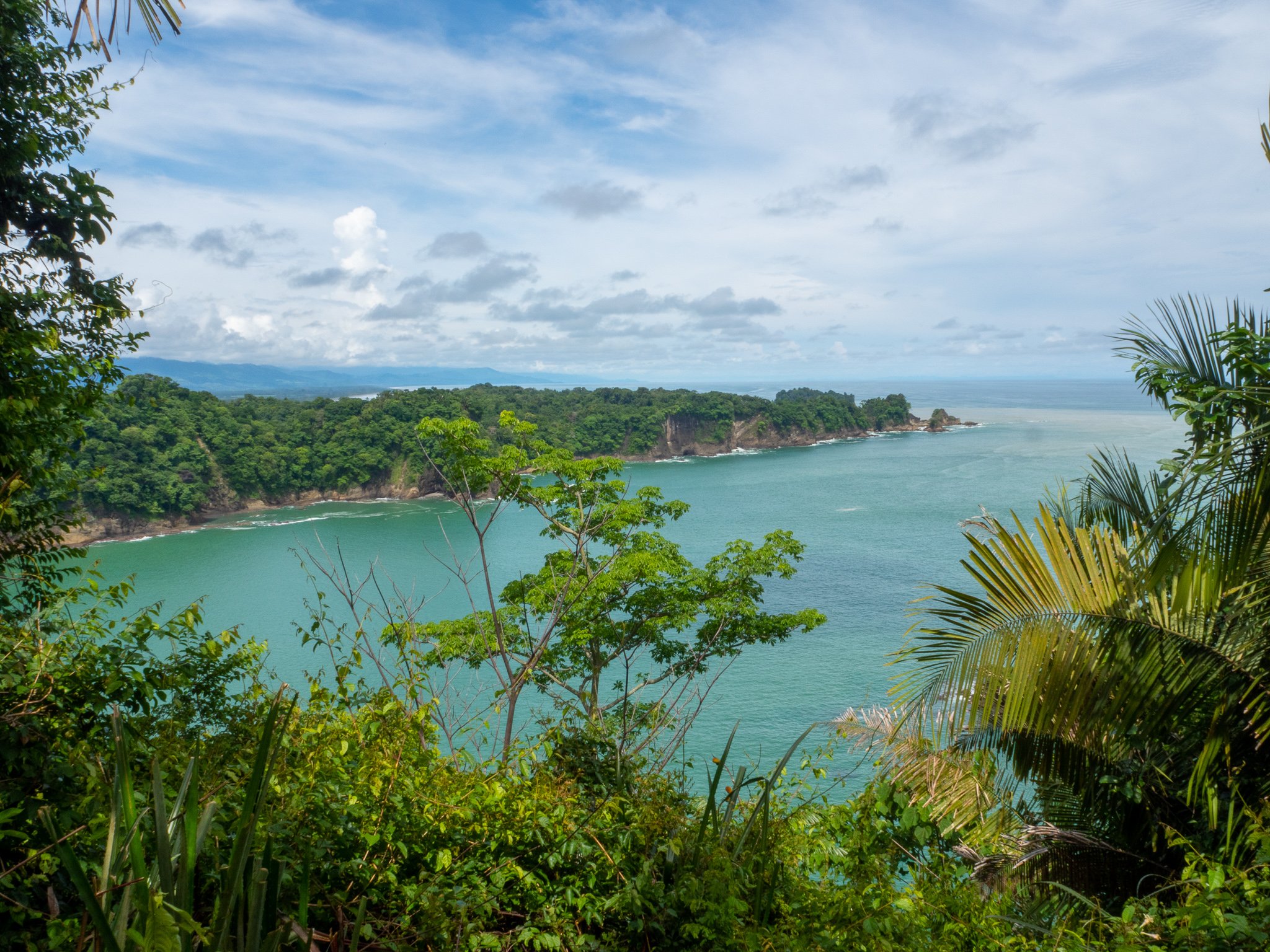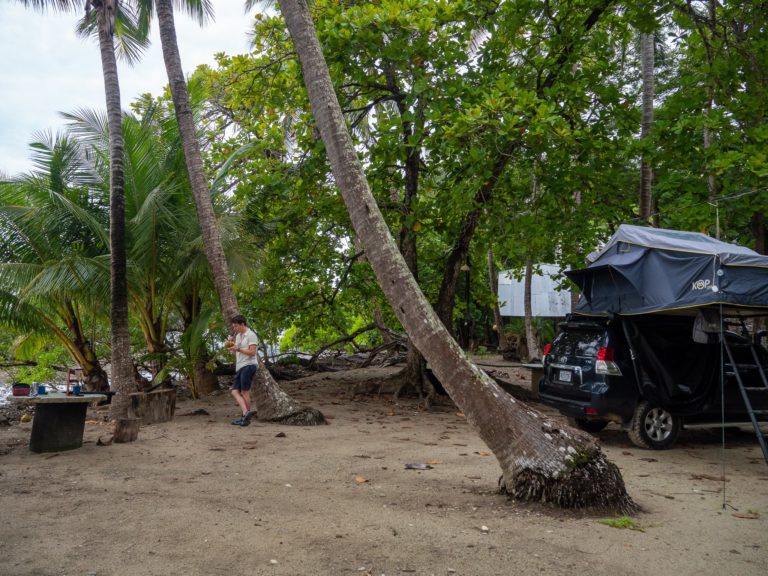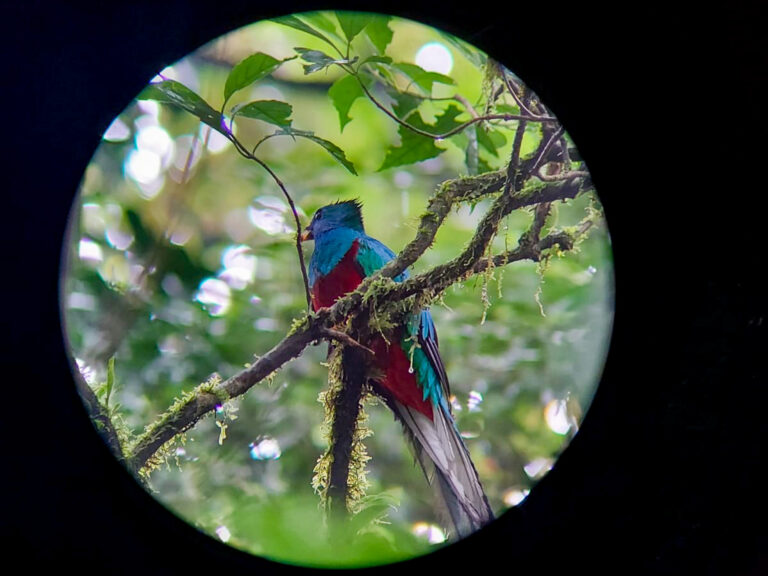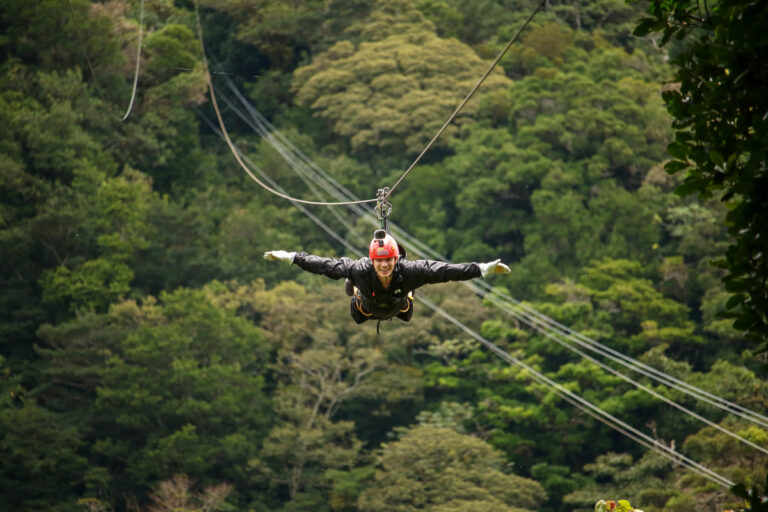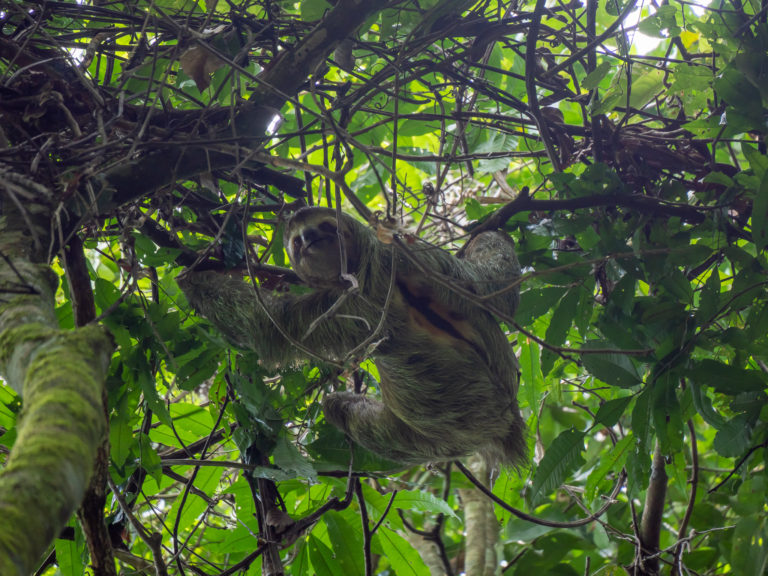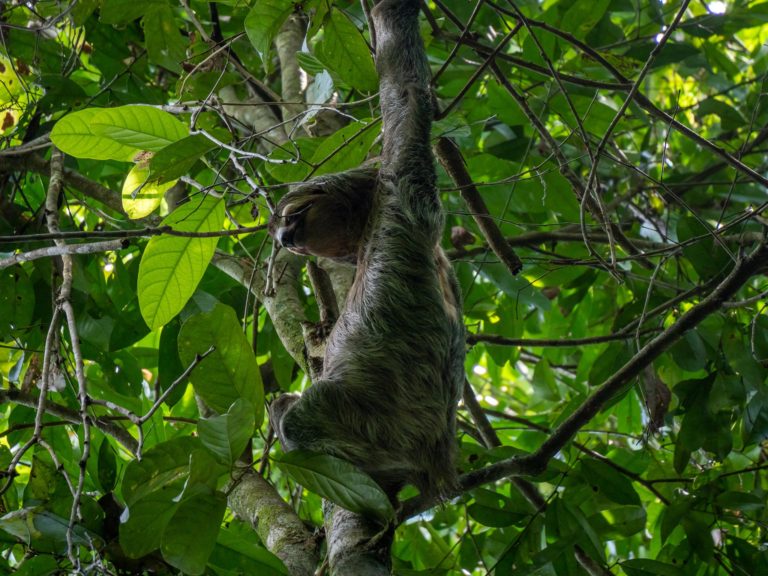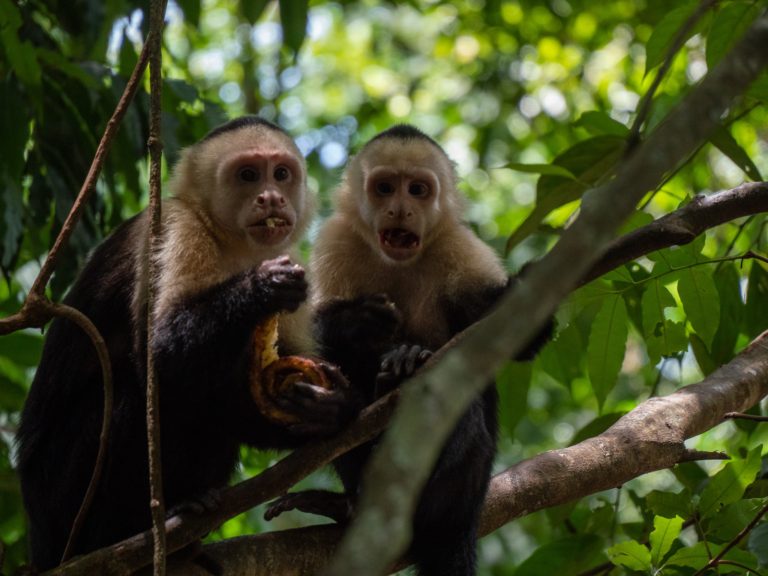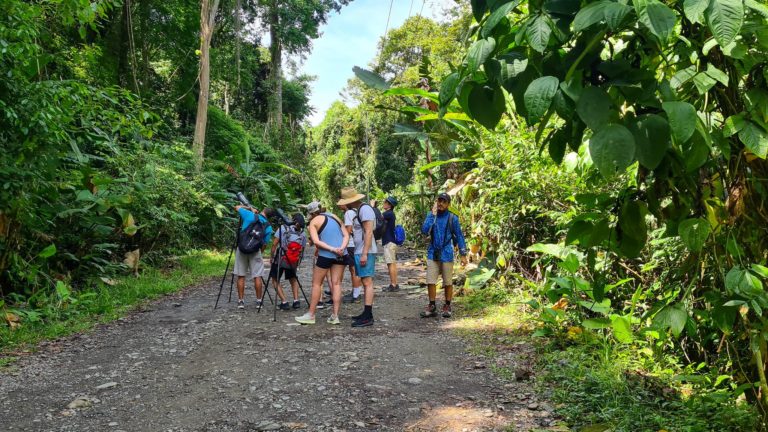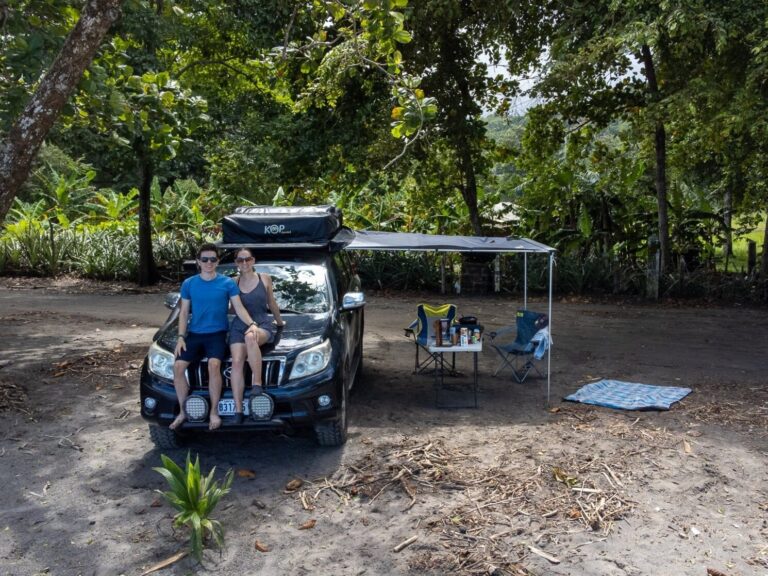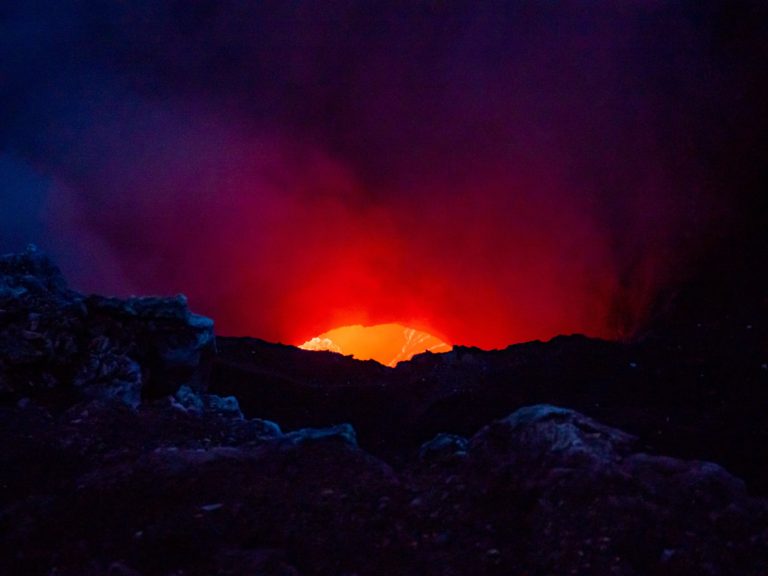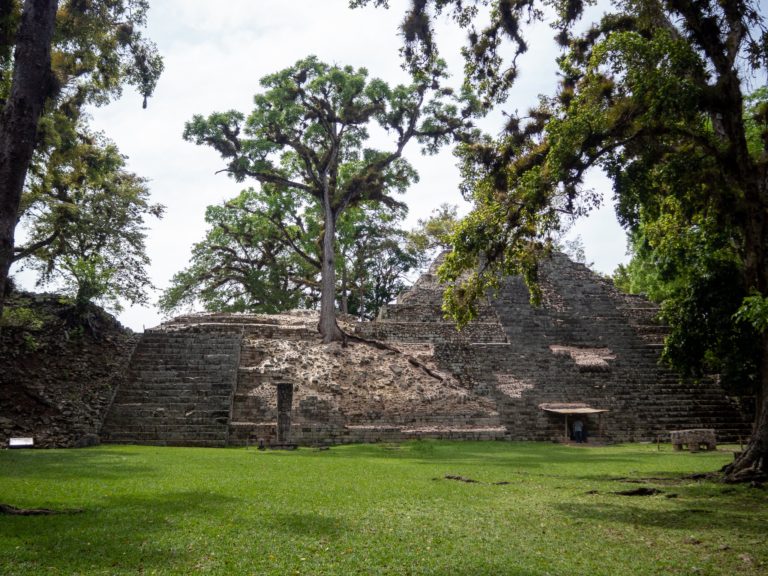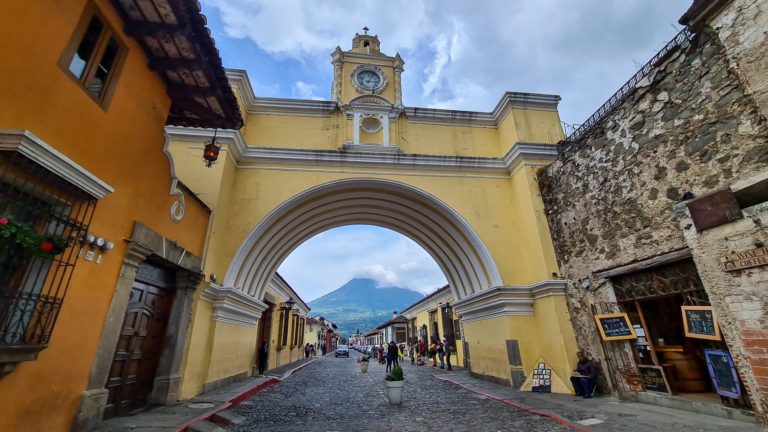Visiting Manuel Antonio National Park: Everything You Need to Know
A thorough travel guide to visiting Manuel Antonio National Park – opening times, ticket prices, location, wildlife, hikes, beaches and things you need to know before you go.
(Updated 2024)
This post may contain affiliate links, which means we might earn a small commission on anything purchased through these links at no extra cost to you. Learn more on our Disclaimer page.
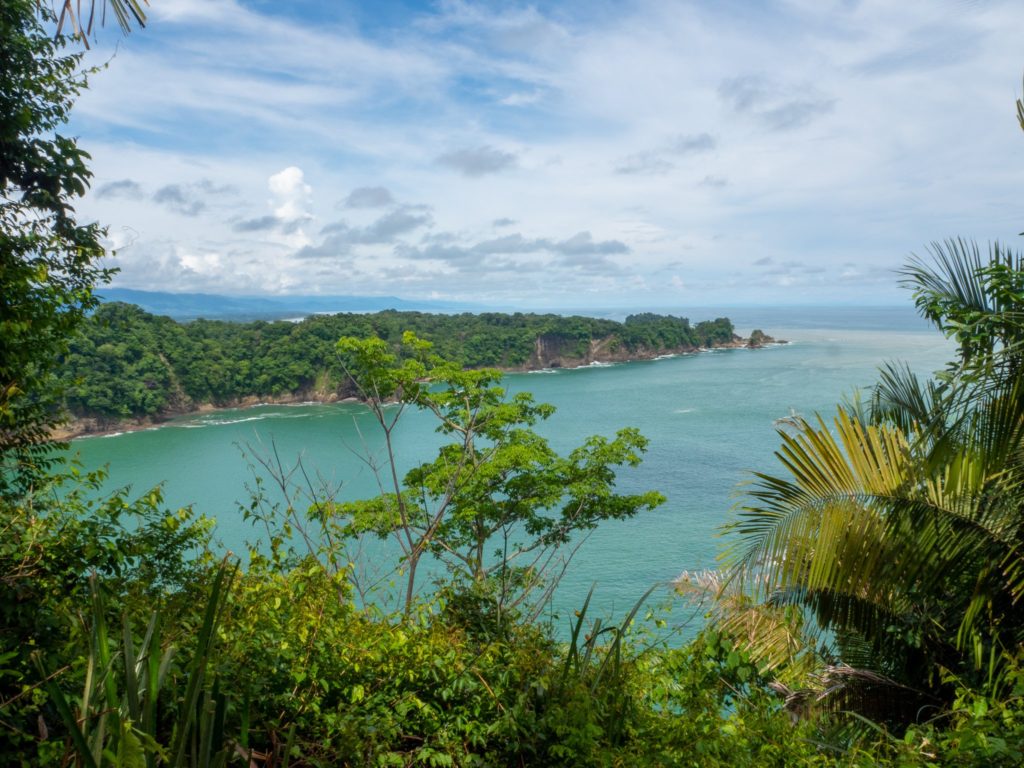
We did a lot of research before visiting Manuel Antonio National Park. Many of the visitor guides to Manuel Antonio breeze over a lot of key information or important issues that you’ll want to know before planning your own trip. We found a lot of conflicting information on information like prices and times too. So we’ve put together this thorough Manuel Antonio National Park travel guide so you have all the information you need to plan your trip, in one place.
Time needed: At least one day.
Cost: $18.08 USD for adults, $5.65 USD for children.
Tickets: Buy tickets online, in advance via SINAC.
When to go: The first time slot in the morning at 7:00.
Weather: Dry and sunny between December to April, afternoon showers frequent between May to November. Average highs of 30°C (86 °F) with a tropical and humid climate.
Language: Spanish.
Currency: Costa Rican Colones (CRC).
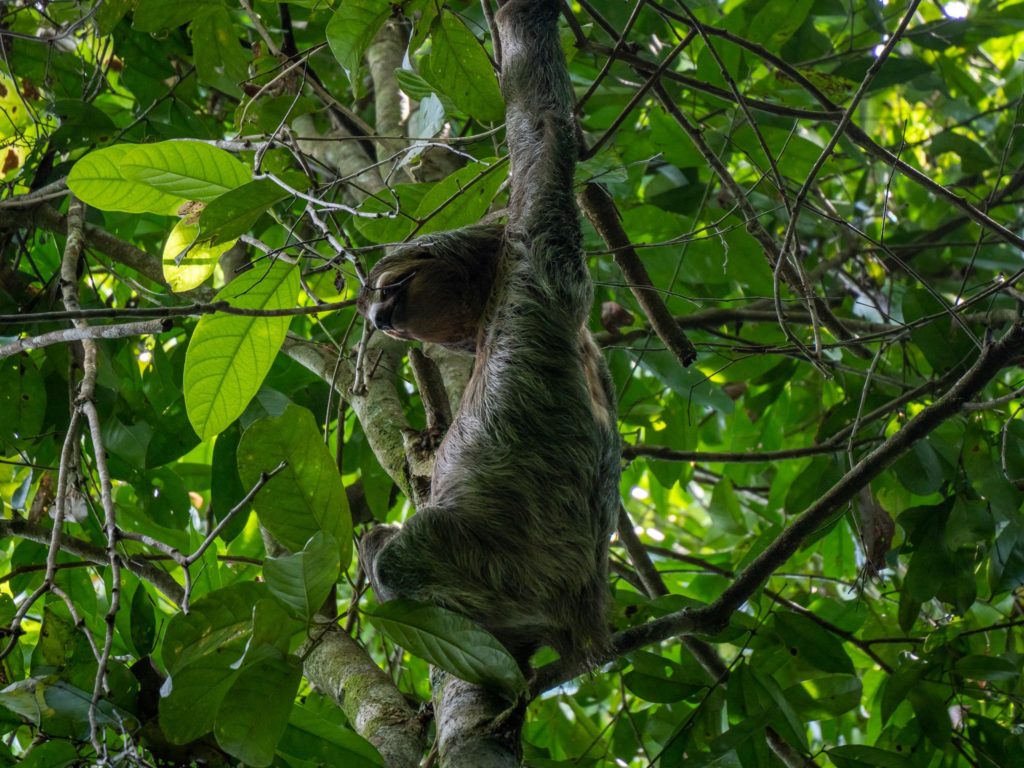
About Manuel Antonio National Park
Chances are, if you’re planning a trip to Costa Rica, you’ve heard of Manuel Antonio National Park (Parque Nacional Manuel Antonio in Spanish). It may be the smallest national park in Costa Rica but it’s also one of, if not the most, popular. You may be asking: what is it about Manuel Antonio National Park that makes it so popular? Simply put, it’s the abundance of diverse wildlife that you’re almost guaranteed to see that draws visitors in.
The relatively small reserve of 4,900 acres (1,983 hectares) is home to pristine beaches, lush jungles, raw mangroves, spewing waterfalls and of course countless animals. This unique conservation area is intensely biodiverse and super accessible – which makes it more affordable to travel to than some of the more remote national parks in Costa Rica. Not too far from the capital city of San José, the park was established in 1972 after campaigning from the local community who wished to preserve the wilderness of the area. Now it’s been listed as one of the best national parks in the world and has some of the greatest varieties of wildlife anywhere in the world.
You’re going to want to add Manuel Antonio National Park to your Costa Rica bucket list. Here’s everything (and we’ve really included everything) you need to know before you go.
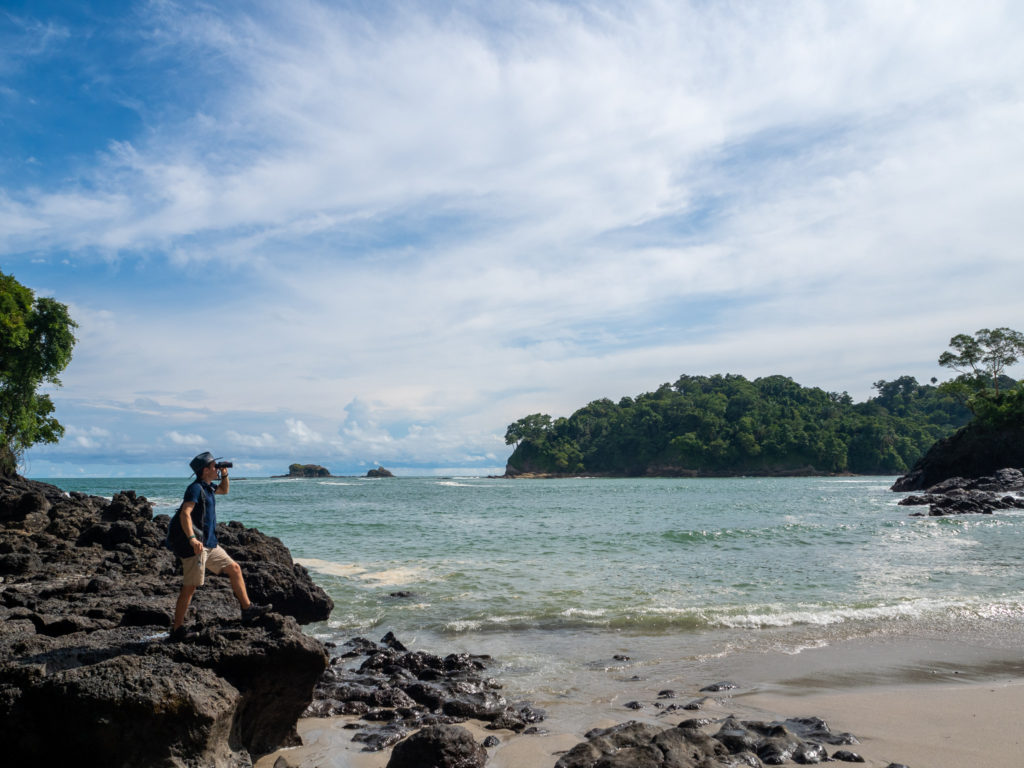
What is Manuel Antonio National Park known for?
Manuel Antonio National Park is known for its lush jungle trails, beautiful beaches and an abundance of wildlife. The park is one of the best places to see wild animals in Costa Rica and is home to an intense biodiversity of indigenous flora and fauna. Visitors to the park can expect to see sloths, monkeys, armadillos, agoutis, deer, iguanas, scarlet macaws, toucans and more.
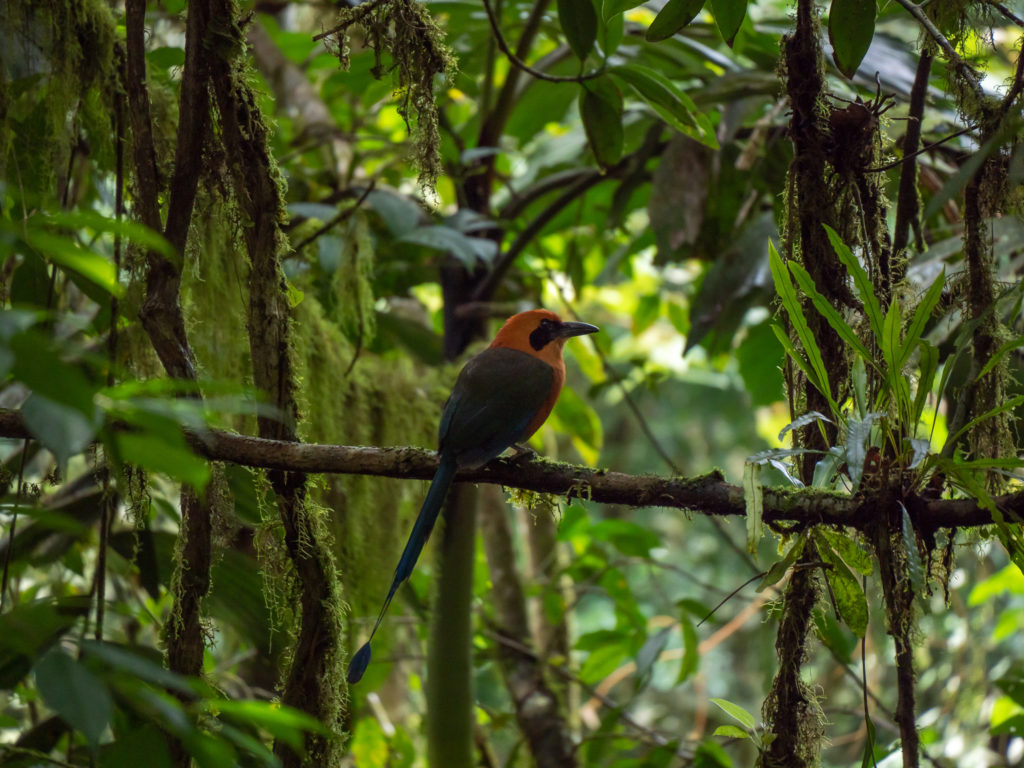
Where is Manuel Antonio National Park located?
Manuel Antonio National Park lies on the west coast of Costa Rica in the Puntarenas Province. The park is actually situated in a town of the same name (Manuel Antonio) but many people consider the closest town to be Quepos. Quepos is situated to the north and is only a 15 minute drive away. Because of its close proximity, many visitors choose to stay in Quepos the night before visiting Manuel Antonio National Park or stop there after their visit.
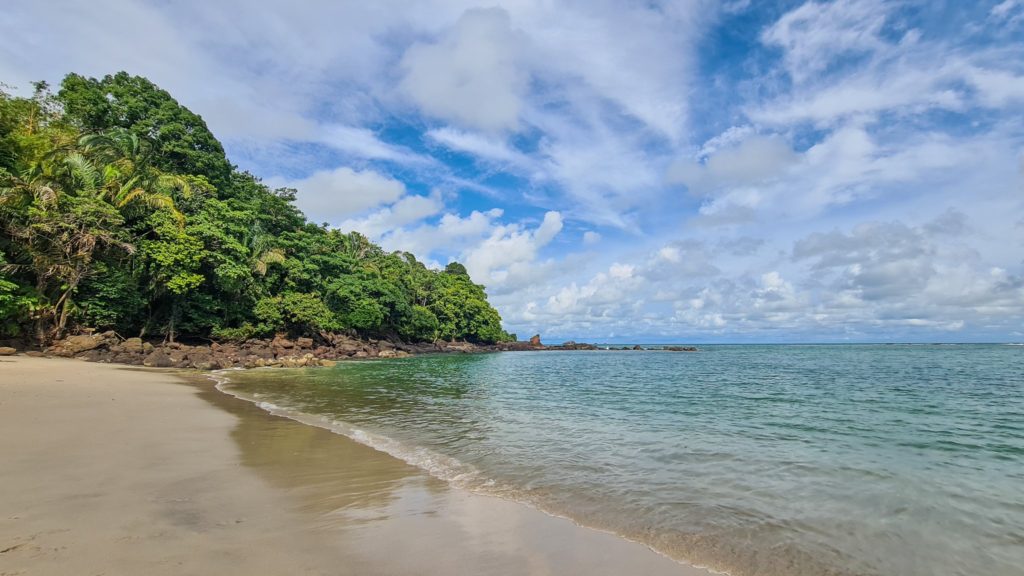
How to get to Manuel Antonio National Park
There are several ways to plan your visit to Manuel Antonio National Park. It’s possible to get to the entrance by car or by public transport.
To fly in, the closest airport is Quepos Regional Airport. It’s possible to get a 25 minute domestic flight from Juan Santamaría International Airport (SJO), the main airport in San José. Alternatively, you can enjoy the 4 hour coastal drive from Costa Rica’s capital.
The first thing you need to know about visiting Manuel Antonio National Park is that there are actually two ways to reach the park entrance. The first way to get to the entrance of Manuel Antonio National Park is the most commonly used. After parking your car in one of the unofficial car parks (more on this later!), simply follow the road to the end where Manuel Antonio Tico Lodge and Gelateria El Parque sit. This is the official entrance and the beginning of The Park Trail.
If you arrive at Manuel Antonio National Park by bus, you’ll likely be dropped off at the end of the 618 Road by Espadilla Norte Beach. From here, you can follow The Beach Trail up the hill to the main entrance.
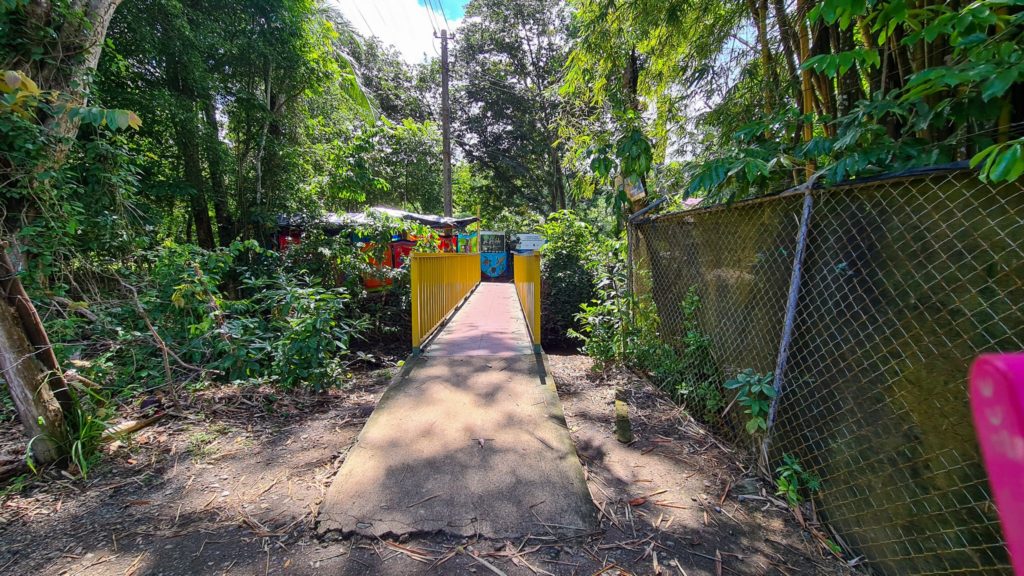
Manuel Antonio National Park Map
The best map of Manuel Antonio National Park is the one at the official entrance, which we’ve put a photo of below. It clearly marks all the facilities, viewpoints and beaches in the park, as well as the paths and trails you can hike within. There are also multiple boards with maps within the park to mark where you are. Check out our wildlife map of Manuel Antonio National Park later in this article, where we’ve pinned all the places we saw animals in the park.
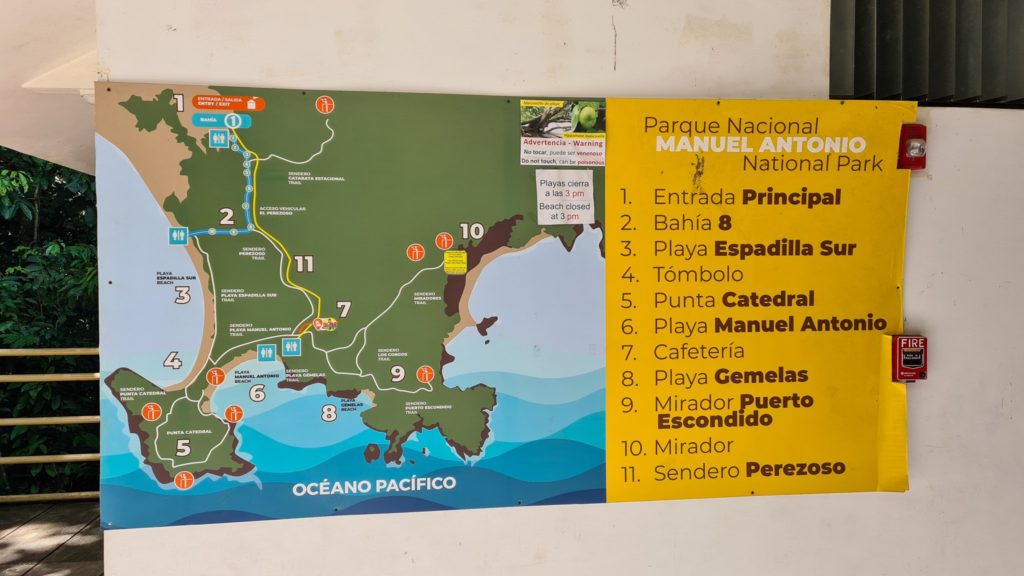
Visiting Manuel Antonio National Park by car
From San José: The journey to Manuel Antonio National Park from San José takes between 3 – 3 1/2 hours by car. It’s 99 miles (160km) of scenic driving. The road conditions are good and the stretch along the Pacific coast offers spectacular views.
From Monteverde: The 121 mile (196km) journey to Manuel Antonio National Park from Monteverde takes about 4 hours to drive by car. The roads around Monteverde are mountainous and windy, so it’s recommended to hire a 4×4.
From La Fortuna: The journey to Manuel Antonio National Park from La Fortuna takes about 4 1/2 hours. It is just over 136 miles (220km) of driving.
From Uvita: The journey to Manuel Antonio National Park from Uvita takes just over 1 hour. It is just over 40 miles (65 km) long and follows the Pacific coast North past Dominical.
Once you arrive in downtown Manuel Antonio, follow the road until Restaurante Marlin. Here, take a left up the hill and follow the road as far as you can go. There are several independent car parks to choose from here.
It’s important to note that there is no official parking at Manuel Antonio National Park, which has created a market for a lot of unofficial parking lots. Unfortunately, there are a lot of scams cropping up in Manuel Antonio. You may be stopped on your way into the village by people posing as official guides selling bogus tickets, or persuaded to park up in an “official” car park which is ridiculously expensive. We touch on this later in this article under the everything you need to know before visiting Manuel Antonio National Park section. We also go into more detail about the situation in our article about unethical tourism at Manuel Antonio.
The best way to get around Costa Rica is by hiring a car. This gives you the freedom to explore on your own at your own pace. If you’re looking for an adventure, we’d also recommend checking out Nomad America’s camper cars. Their fully kitted-out 4x4s come with a roof-top tent and act as your transport and accommodation all in one.
Read next: Road-tripping Costa Rica in a 4×4 Camper Car with Nomad America
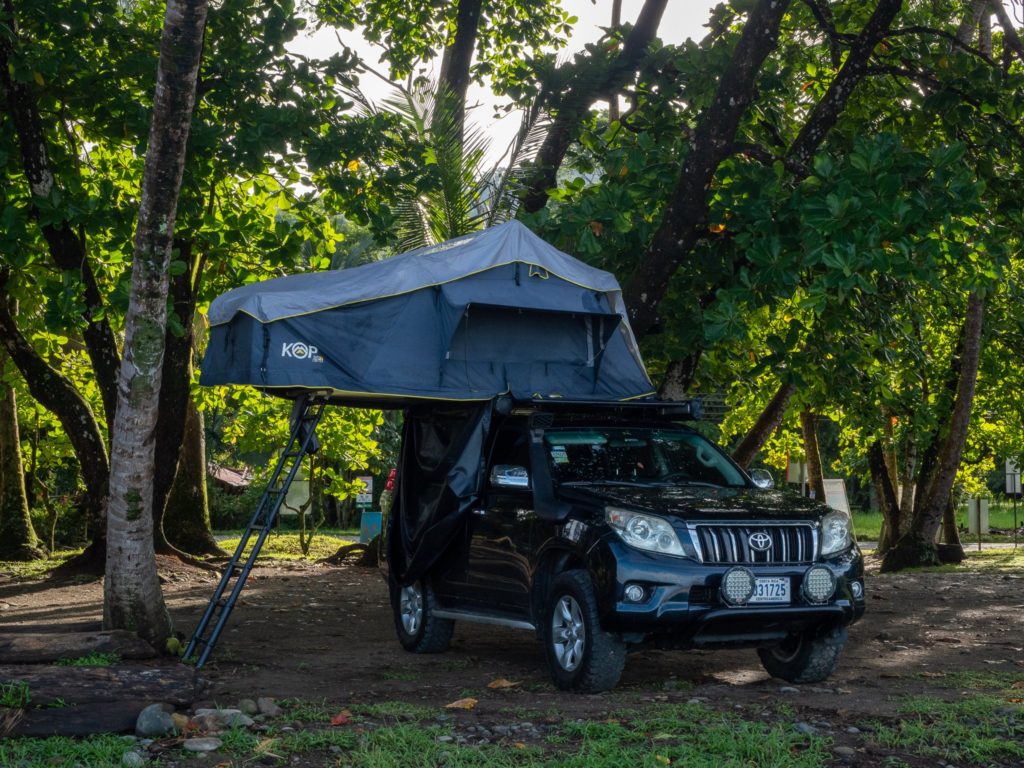
Visiting Manuel Antonio National Park by public transport
From San José: If you don’t fancy driving to Manuel Antonio National Park from San José but still want to take in the epic views, it’s worth hiring a private transfer. A cheaper option would be to book a shared shuttle, which can pick you up from the airport, or from your hotel.
From Monteverde: Shared shuttles run regularly from Monteverde to Manuel Antonio National Park, once in the morning and once in the evening. Shared shuttles can have multiple stops so typically take between 4-5 hours. Public buses are the cheapest way to get from Monteverde to Manuel Antonio National Park, but the journey requires multiple changes and takes around 8 hours. You will need to leave Monteverde early and change in Puntarenas and Quepos. Private transfers are also available to book and are faster than shared transportation.
From La Fortuna: To get to Manuel Antonio National Park from La Fortuna takes between 5-6 hours by shuttle. You can book a direct minivan shuttle with popular companies like RideCR, Paradise Shuttle and Interbus. Alternatively, a private shuttle will get you there faster. The public bus from La Fortuna to Manuel Antonio National Park takes around 7 1/2 hours and is a more complicated route, requiring changes in San Ramon, Puntarenas and Quepos.
From Uvita: A public bus runs between Uvita and Manuel Antonio National Park, taking just over an hour and a half. It stops in Quepos. Taxis are available and cost around $150 USD, while Uber is also available at around $100 USD. Shared vans are a more budget-friendly option and can be booked on Book Away.
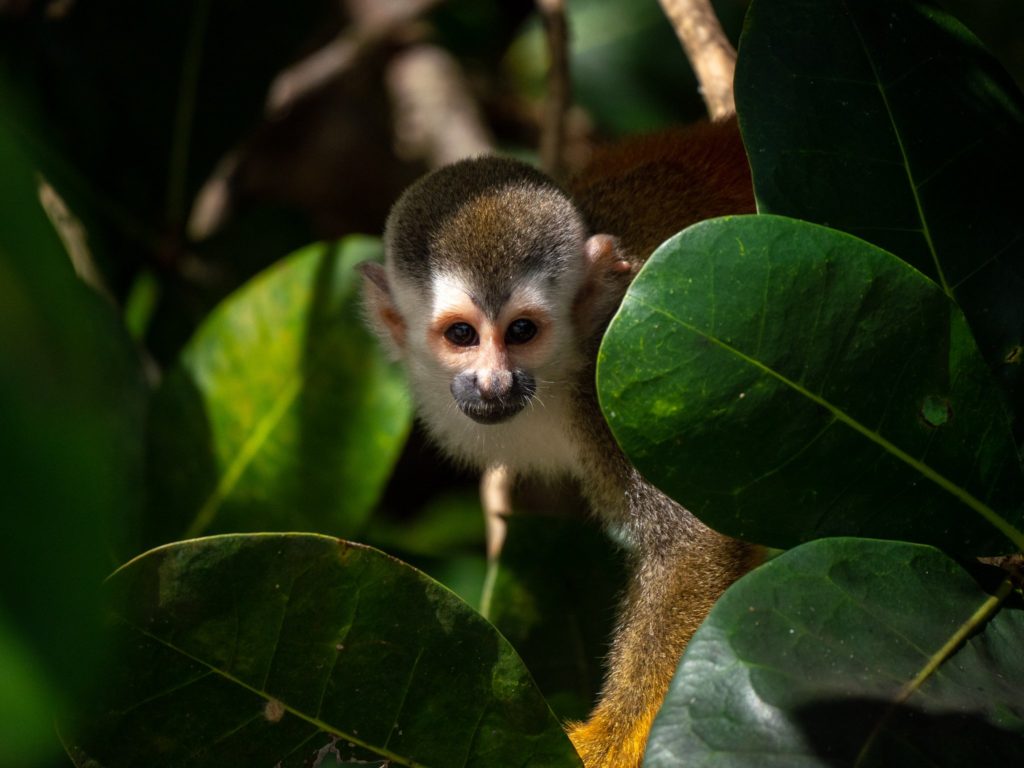
Quepos to Manuel Antonio National Park by bus
If you’re visiting Manuel Antonio National Park by public transport from further afield in Costa Rica, it’s likely that you’ll end up changing in Quepos. From Quepos, you can catch the bus from the Quepos Bus Terminal. The first buses of the day are 5:45 and 6:45 with buses running around every hour on the hour after that until 21:00.
The journey from Quepos to Manuel Antonio National Park takes around half an hour by bus. The bus follows the 618 road and makes multiple stops along the way. Bus stops are signposted by a little sign that reads parada and buses only pick up and drop off from these designated stops. The fare is less than 500 colones per person and it’s a good idea to have small change for this.
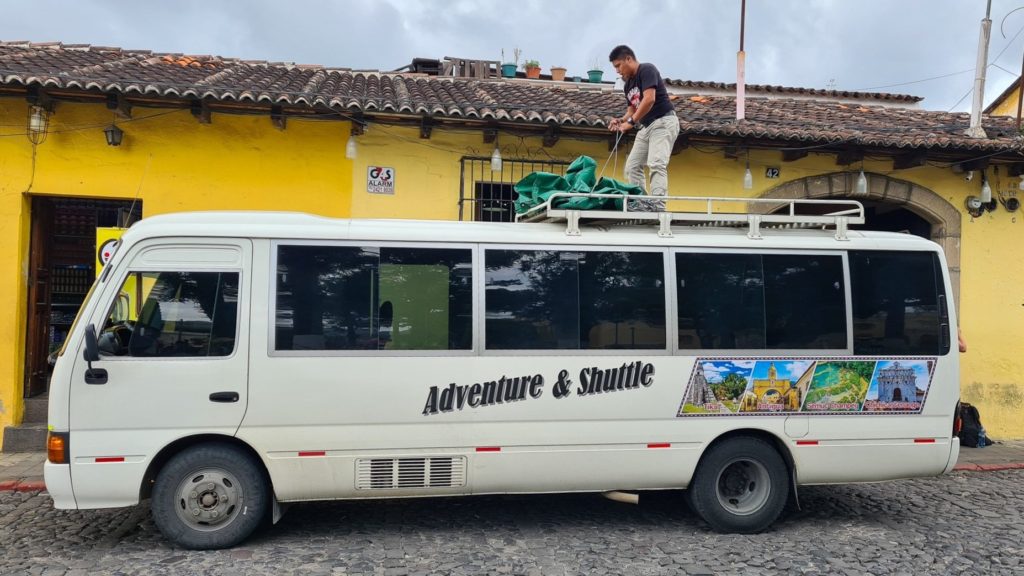
Do you need a guide for Manuel Antonio National Park?
Whether or not to hire a guide is possibly the most hotly debated question people ask before visiting Manuel Antonio National Park. There are many benefits to hiring a guide but some people don’t want to spend the extra money and would rather go it alone. We’ve listed all the pros and cons, as well as all the key information you need to know about guided tours and self-guided visits in this article here.
Read next: Do you need a guide for Manuel Antonio National Park?
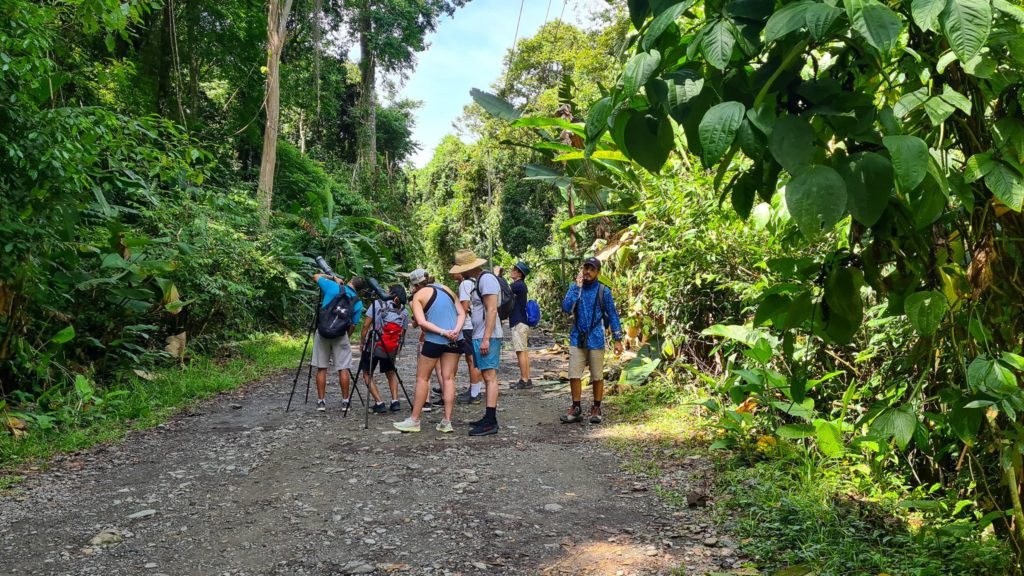
Which animals are found in Manuel Antonio National Park?
There are so many animals to see in Manuel Antonio National Park. 109 species of mammal can be found within the park, while 184 species of bird call the same area home. Sloths, monkeys, birds, armadillos, coati, agouti, deer, reptiles, frogs, snakes and more can all be found in Manuel Antonio National Park. We’ve compiled a full list of the main animals you might see on your visit, and where to see them, below.
Read next: Where to see Sloths (+ other wildlife) in La Fortuna
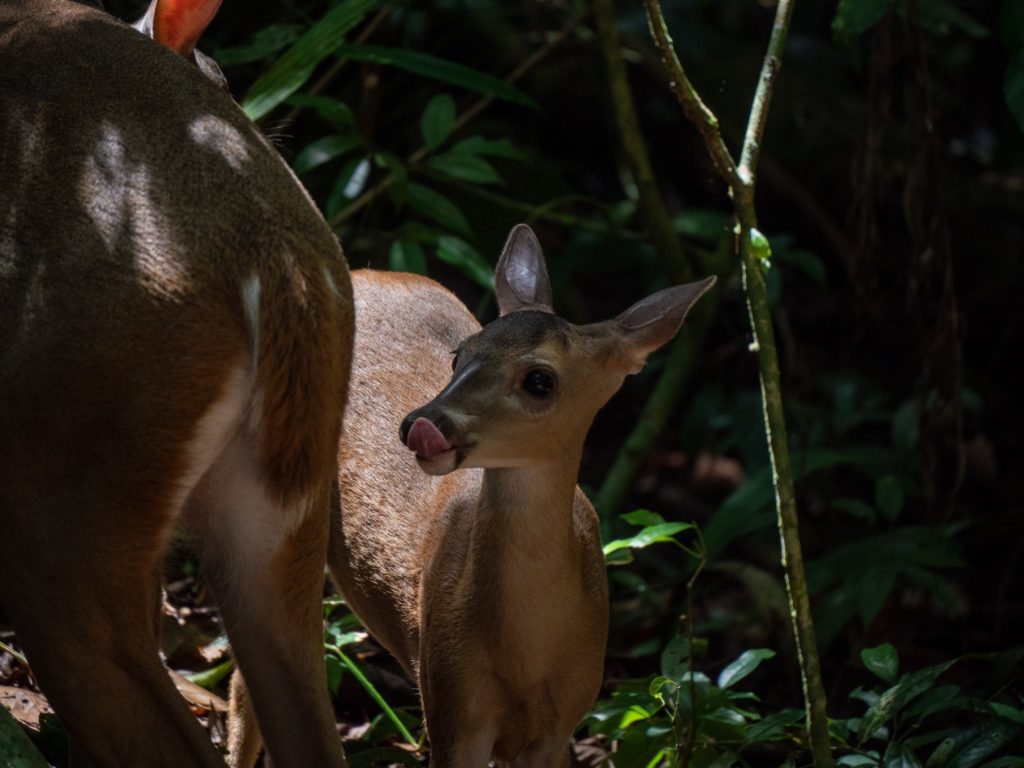
Where to see wildlife in Manuel Antonio National Park
Wildlife can be found all through the park. You’re most likely to spot animals from the trails, but certain species can be seen at the waterfall, on the beaches and at the viewpoints too.
You can use our interactive wildlife map of Manuel Antonio National Park below to see where we had all our wildlife encounters. We’ve pinned each spot and the animal we saw there.
Sloth
Manuel Antonio National Park is one of the best places to see sloths in Costa Rica. Two types of sloth can be found here – the brown-throated three-toed sloth and Hoffmann’s two-toed sloth. They can most commonly be seen in the treetops, especially along the main path and Sloth Trail.
Where to see sloths: Sloth Trail, Mangrove Trail, Manuel Antonio Beach Trail.
Read next: Should you hold a sloth in Costa Rica?
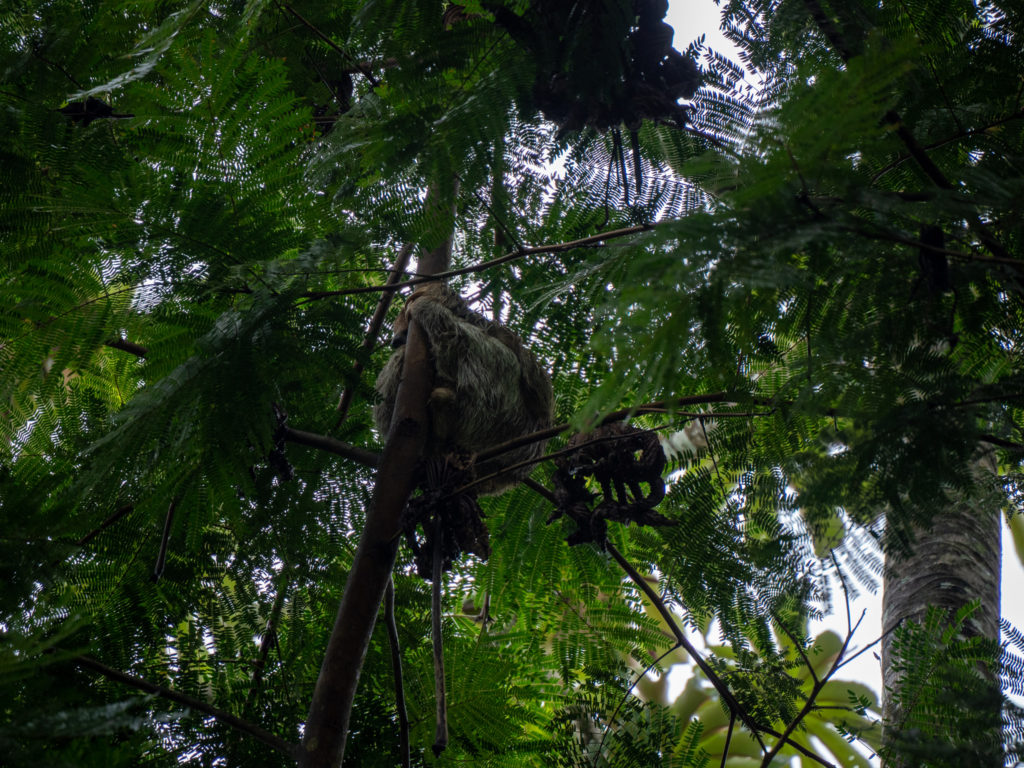
Monkey
Three out of four of the species of monkey you can see in Costa Rica can be found in Manuel Antonio National Park: the mantled howler monkey, Central American squirrel monkey, and Panamanian white-faced capuchin monkey. Spider monkeys are rumoured to have been seen infrequently in the park too. You’ll often hear monkeys before you see them, particularly the howler monkeys.
Where to see monkeys: Capuchins can be found all over the park. Howler monkeys are most commonly spotted along the Howler Monkey and Sloth Trails. Squirrel monkeys are rarer to see but are mostly found along the Mangrove Trail, and by the beaches.
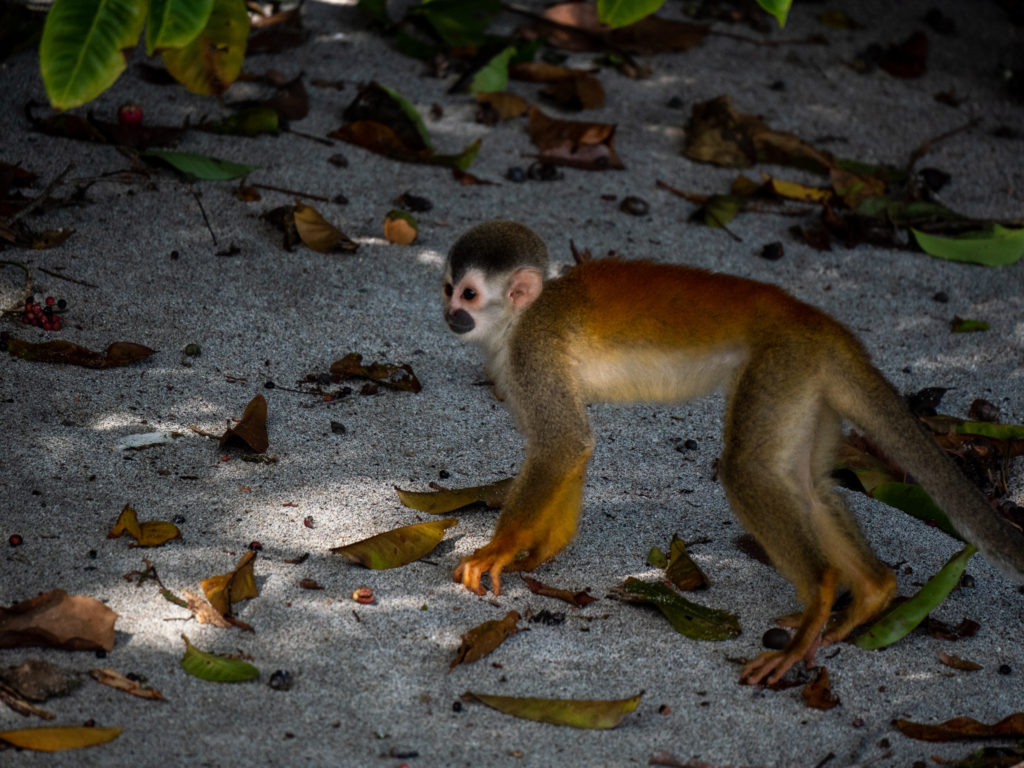
Toucan
There are 6 species of toucan in Costa Rica. The yellow-throated Toucan is commonly found in the branches of the rainforest that make up Manuel Antonio National Park.
Where to see toucans: In the trees on The Waterfall Trail.
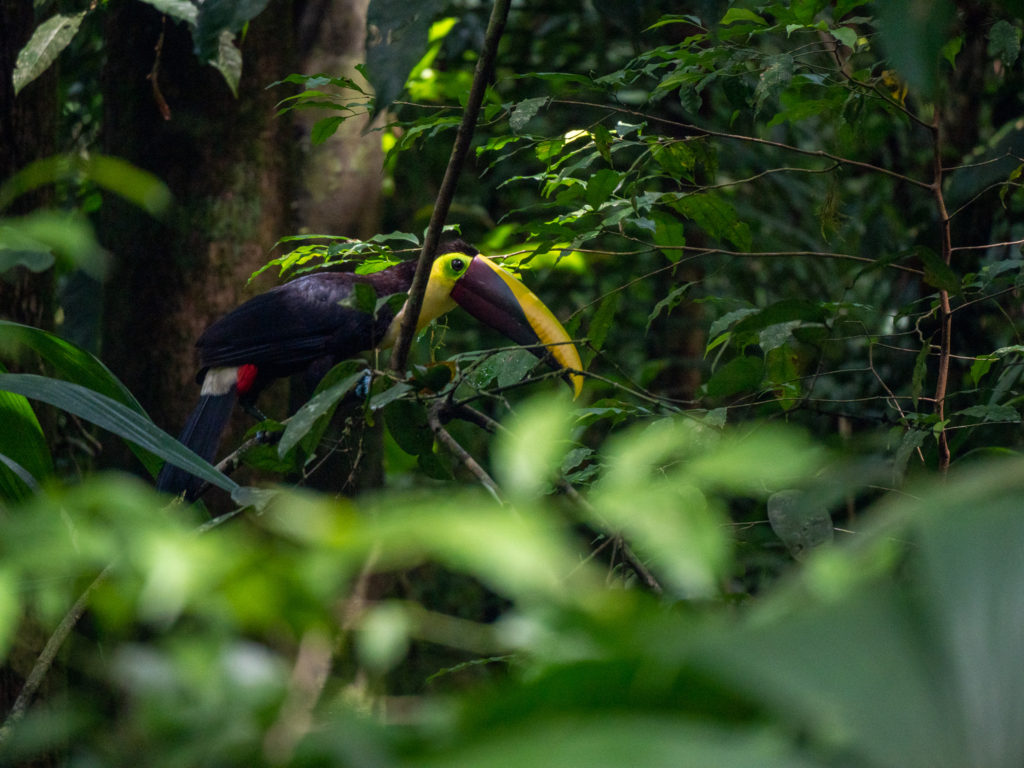
Scarlet Macaw
The brilliantly coloured scarlet macaw is commonly found in lowland humid forests on the Pacific coast of Costa Rica. In the national park, you can often find them by the beaches. Scarlet Macaws mate for life and can live past 50 years of age.
Where to see macaws: Manuel Antonio Beach, South Espadilla Beach, Gemelas Beach.
Read next: Spotting Scarlet Macaws at Copán Mayan Archaeological Site, Honduras
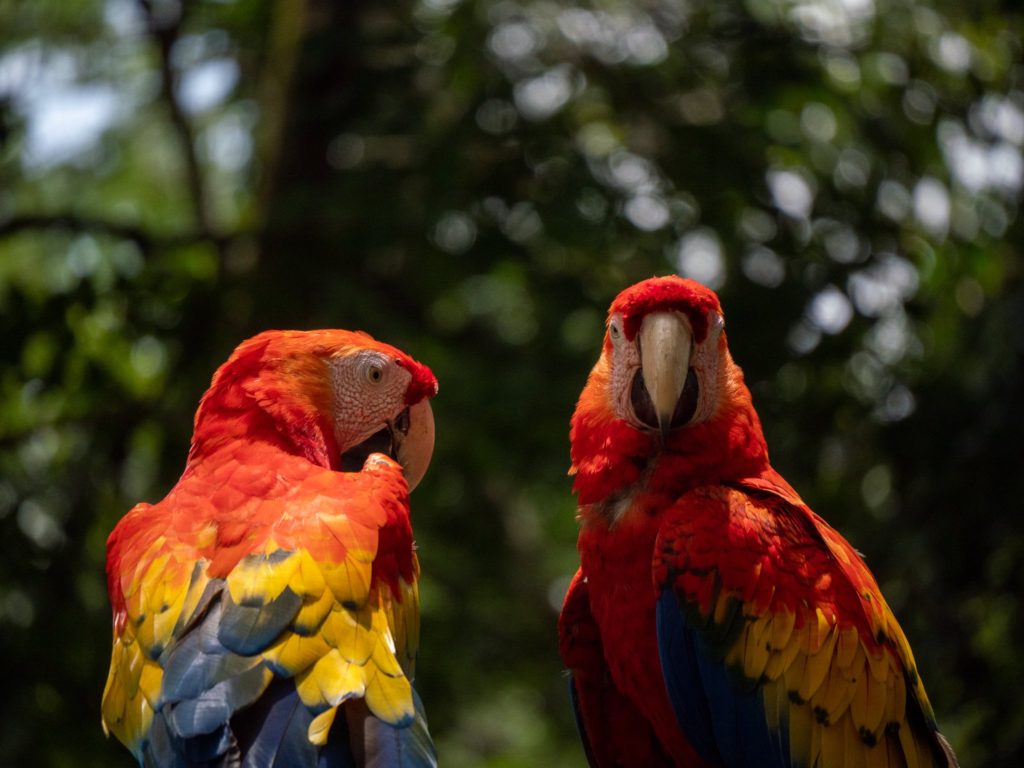
Armadillo
The nine-banded armadillo, also known as the nine-banded long-nosed armadillo or cuzuco, can be seen near the trails, often digging in the ground for food. They are mostly nocturnal so dawn and dusk are the best times to see them, although we found a small group of them in the late afternoon.
Where to see armadillos: The Howler Monkey Trail, Hidden Port Trail, Lookout Trail.
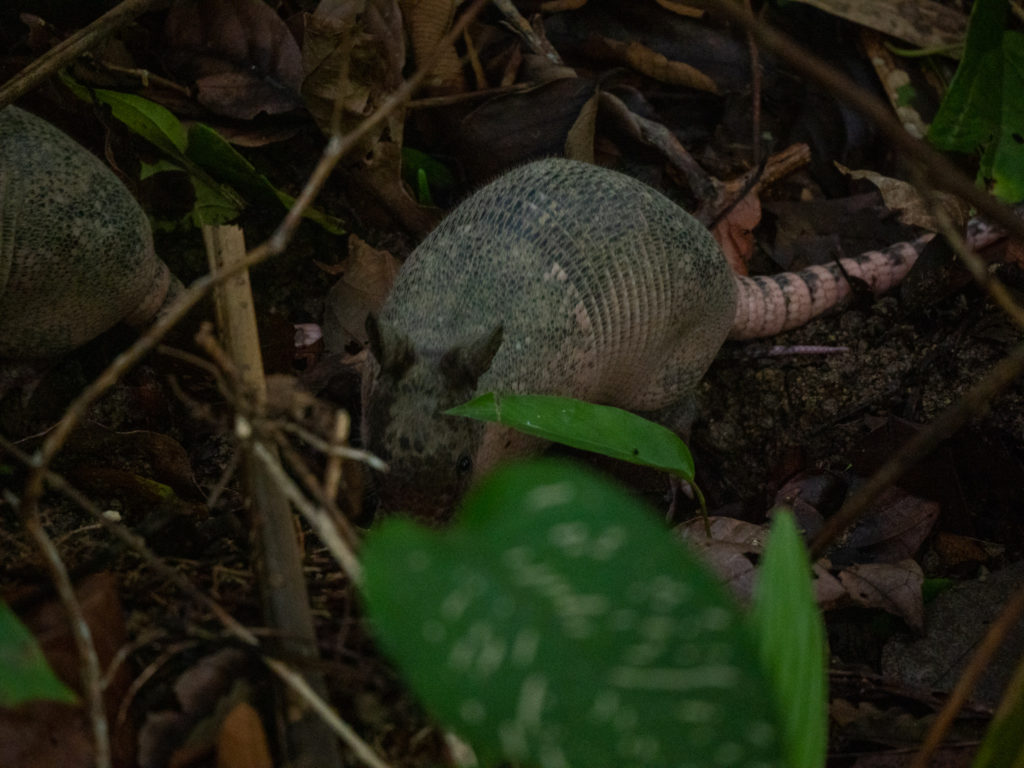
Deer
White-tailed deer, often with young, can be seen along most flat trails. They’re gentle creatures and quite shy.
Where to see deer: The Main Access Road and by the café.
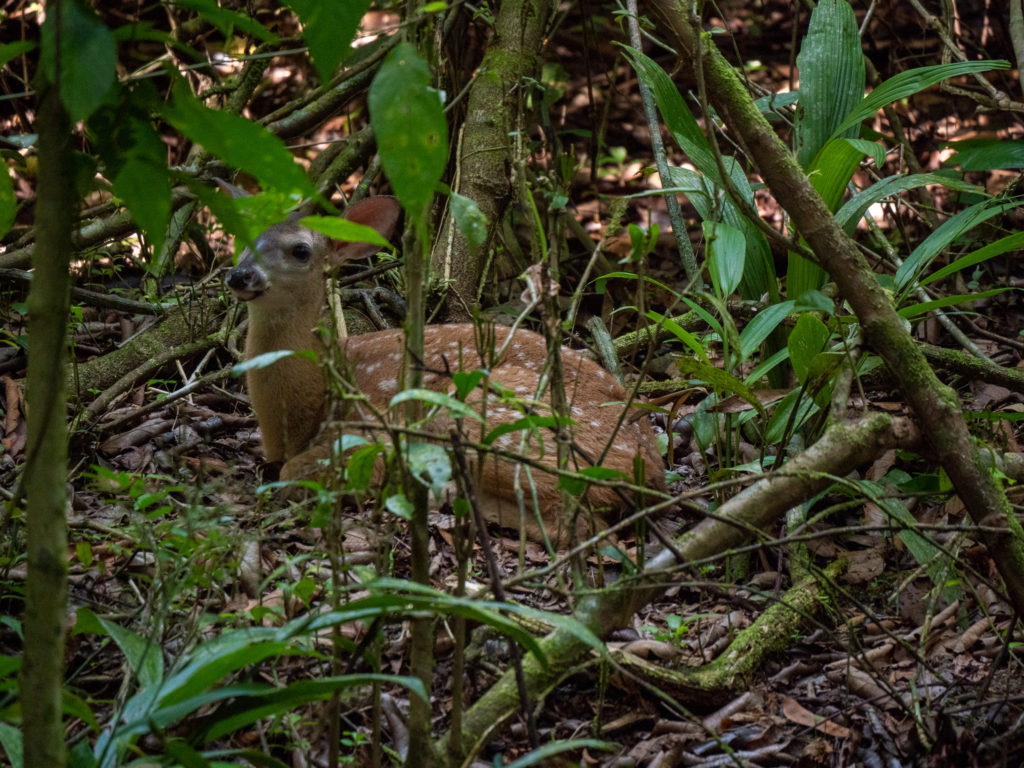
Iguana
There are several kinds of iguana in Costa Rica. The black spiny-tailed iguana, green iguana and common basilisk can all be found, either near the paths or climbing tree trunks. The black spiny-tailed iguana is also fond of sunbathing on the rocks by the beaches.
Where to see iguana: Manuel Antonio Beach, South Espadilla Beach, Gemelas Beach.
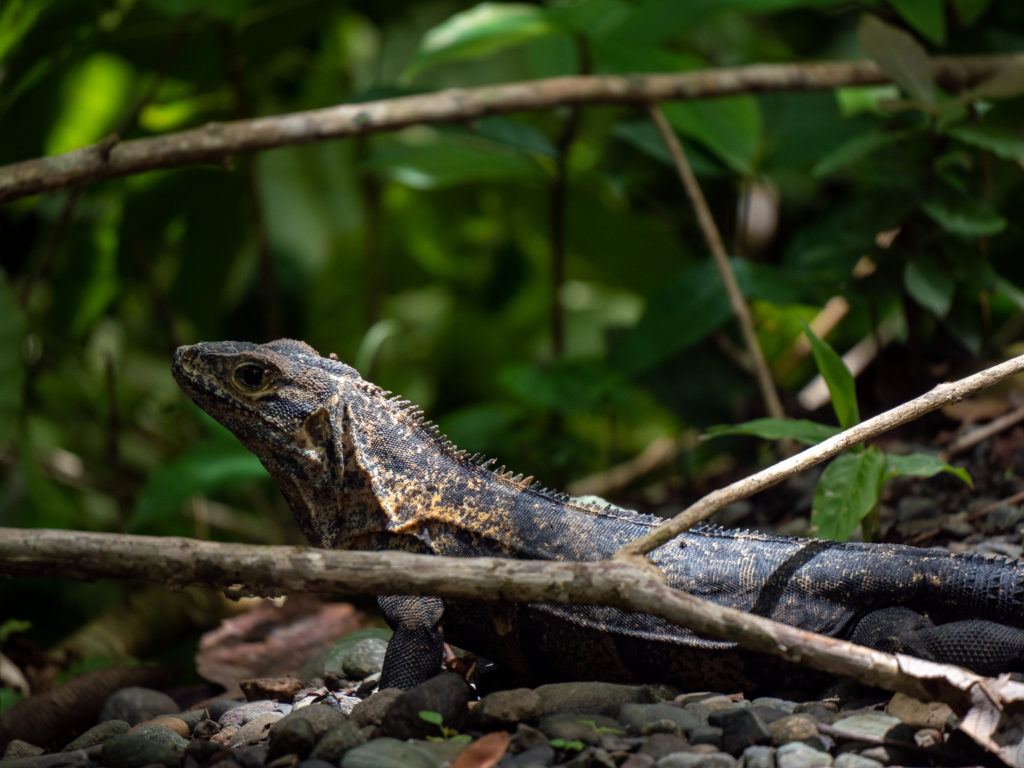
Coati
The coatimundi, also known as the white-nosed coati, is a member of the raccoon family. They can often be spotted crossing the Main Access Road or by the beaches, but they’re quick so keep your eyes peeled.
Where to see coati: Main Access Road, Manuel Antonio Beach, South Espadilla Beach, Gemelas Beach.
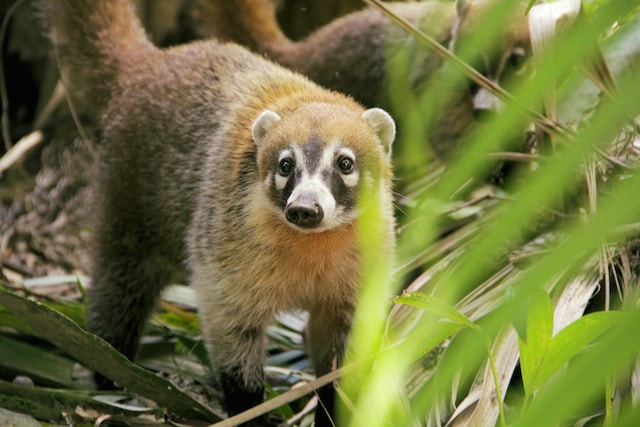
Agouti
A large rodent, aguotis are similar to guinea pigs or chinchillas. They can be seen sniffing around in the undergrowth or crossing the main trail.
Where to see agouti: Main Access Road, Mangrove Trail, Mirador Trail.
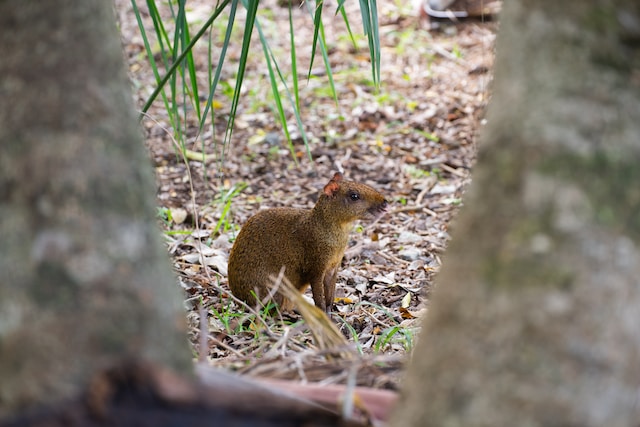
Whales and dolphins
Ok not technically inside the park, but from the viewpoints and beaches of the park you can often the splash of a migratory whale, like a humpback. Dolphins, including bottlenose, rough tooth and spotted, can also be seen in the waters off Costa Rica’s Pacific coast.
Where to see whales and dolphins: From the viewpoints on Cathedral Point Beach Trail and The Lookout Trail, or from Manuel Antonio Beach, South Espadilla Beach, Gemelas Beach.
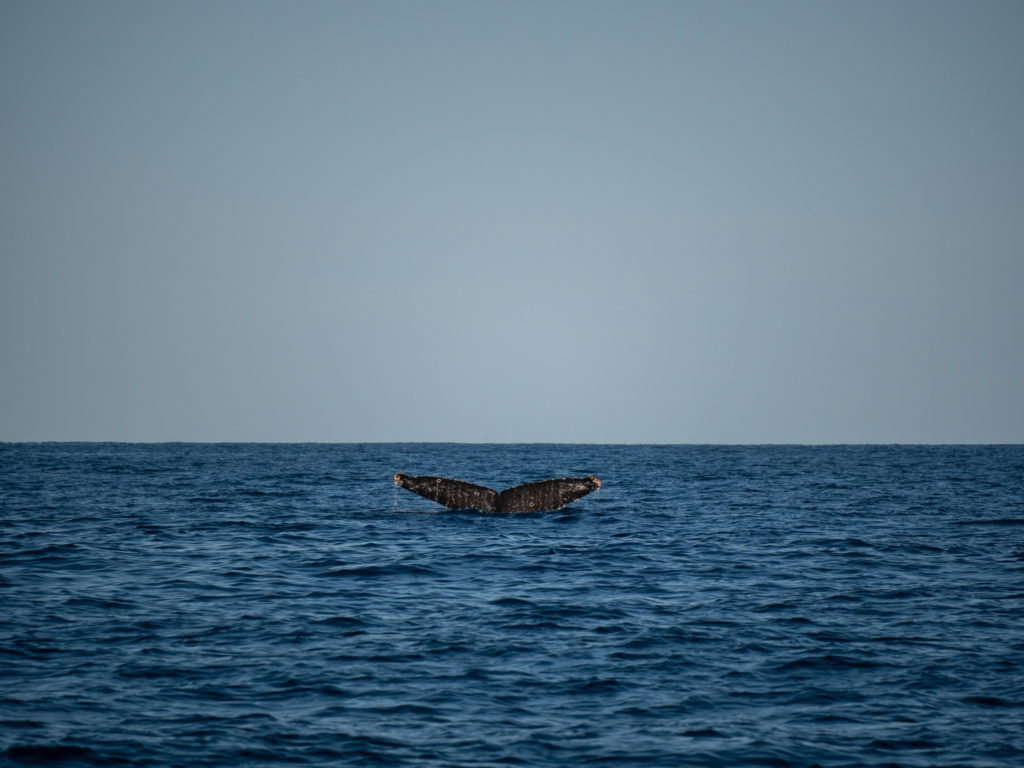
Other wildlife
Other animals including raccoons, snakes, frogs, bats and crabs can also be seen in Manuel Antonio National Park. Even crocodiles and caimans can be seen rarely along the Mangrove Trail. Bird species including hummingbirds, woodpeckers, potoos, motmots, parakeets, turkey vultures and tanagers can also be spotted in the park.
It’s important to remember that every day is different and Manuel Antonio National Park is home to wild animals. This means you can never be certain where they’ll be when and you can’t guarantee seeing them either. We think this is part of what makes wildlife spotting so special and what makes us feel so very lucky when we get to have the most exciting, natural encounters with animals in the wild – on their terms.
Read next: Let’s Talk About Ethical Wildlife Tourism
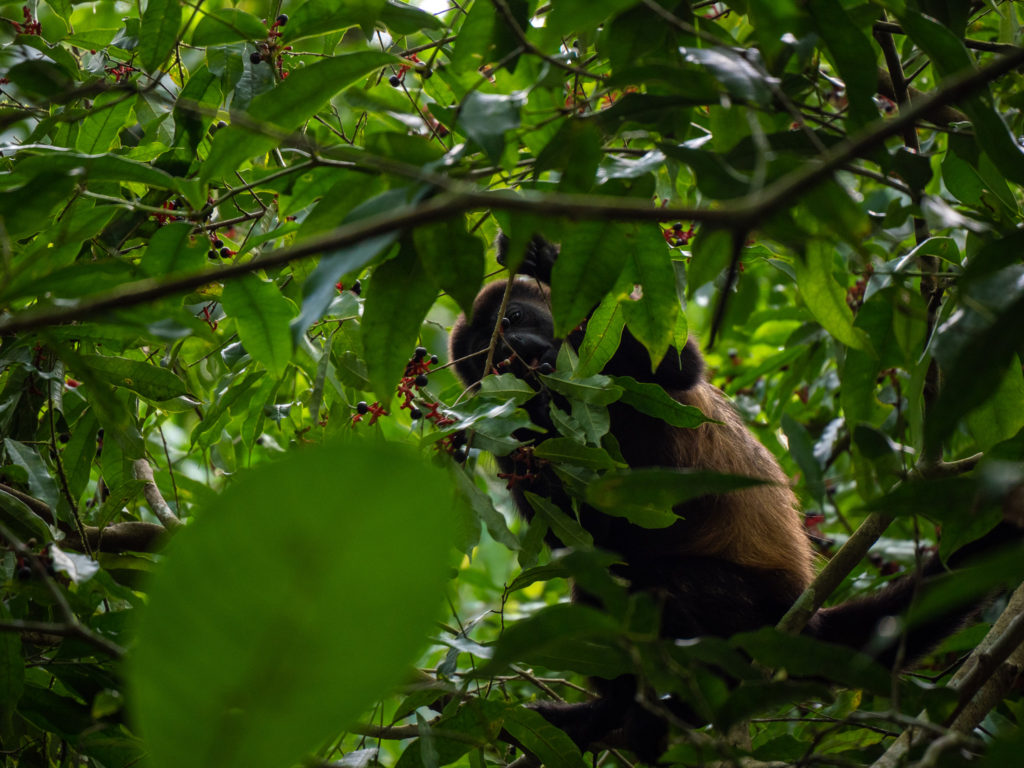
The best things to do in Manuel Antonio National Park
Spotting the wildlife is obviously the number one thing to do in Manuel Antonio National Park, but there’s plenty more to see. Hiking some of the 11 trails is a great way to explore every inch of the park, or you can just settle down and relax on one of the three beaches inside. There’s a waterfall, café, several viewpoints and unlimited views to enjoy too.
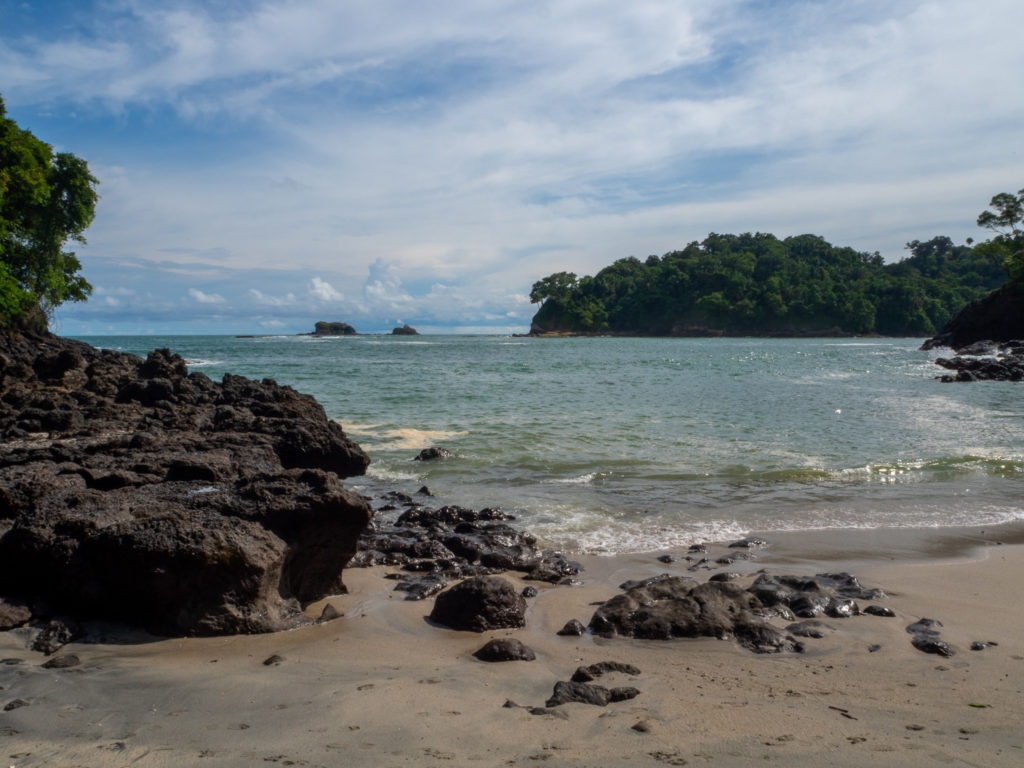
Hiking in Manuel Antonio National Park
Hiking in Manuel Antonio is one of the best activities within the park and a great way to see the wildlife. It’s worth noting that some parts of certain trails are often closed, either seasonally or for repair. You can check the up-to-date conditions at the entrance before you set off.
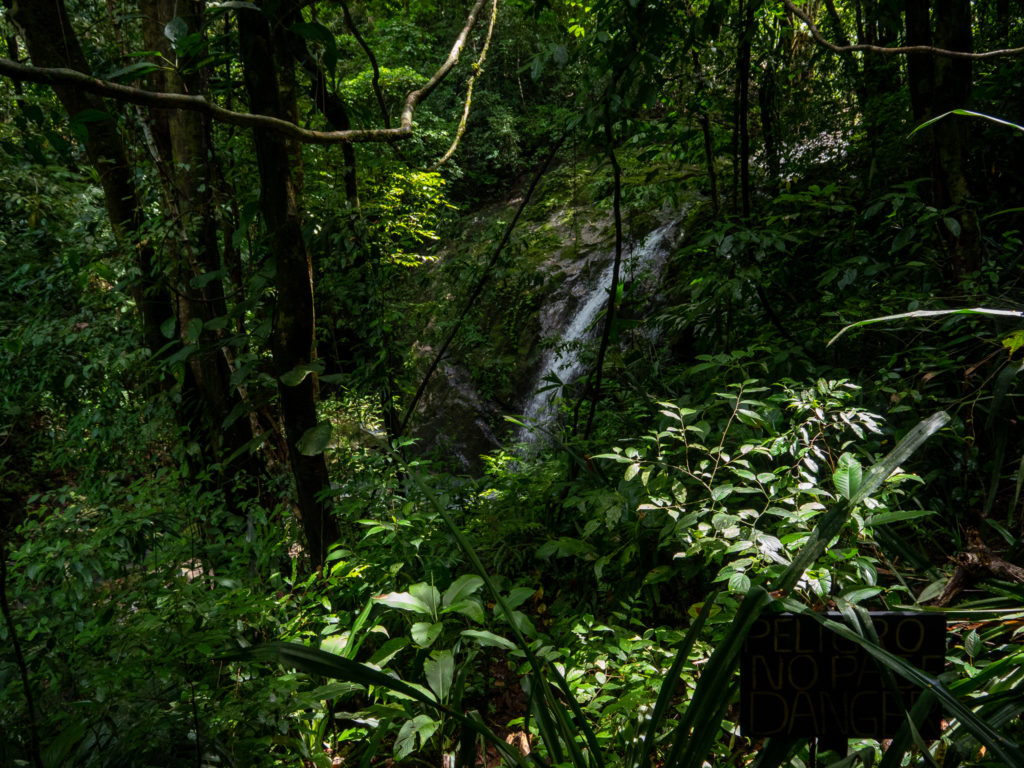
How long does it take to walk around Manuel Antonio National Park?
The Main Access Road is 1.3km each way (2.6km total) and takes about 15 minutes (longer if you stop to spot animals) to the café junction. There are several out-and-back trails which branch off this main road, as well as an alternate boardwalk and paths to the beaches.
You need at least 2-3 hours to get a flavour of the park by walking the most popular trails. But you could easily spend 4-6 hours walking all the different trails in the park.
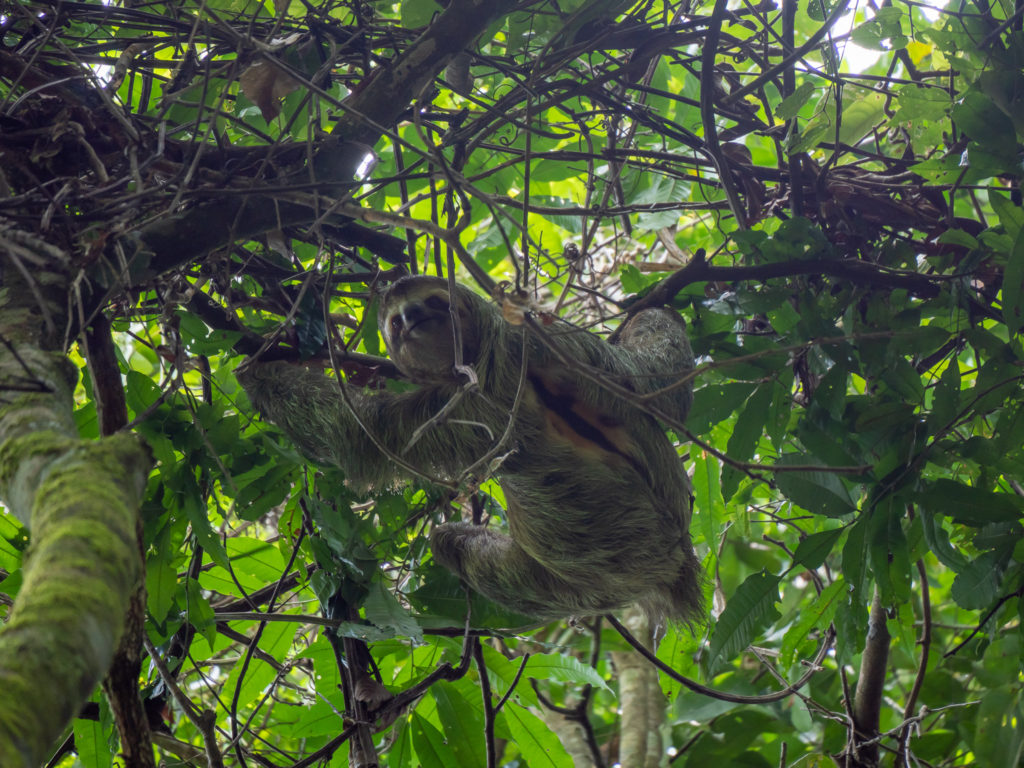
How many trails are in Manuel Antonio National Park?
There are 11 trails in Manuel Antonio National Park. In order of distance from the main entrance, they are:
- The Main Access Road (Estrada Principal)
- The Waterfall Trail (Sendero Catarata Estacional)
- The Sloth Trail (Sendero Perezoso)
- The Mangrove Trail (Sendero El Manglar)
- Espadilla South Beach Trail (Sendero Playa Espadilla Sur)
- Manuel Antonio Beach Trail (Sendero Playa Manuel Antonio)
- Cathedral Point Trail (Sendero Punta Catedral)
- Gemelas Beach Trail (Sendero Playa Gemelas)
- The Howler Monkey Trail (Sendero Los Congos)
- The Hidden Port Trail (Sendero Puerto Escondido)
- The Lookout Trail (Sendero Mirador)
You can see the main hiking trails on the map below.
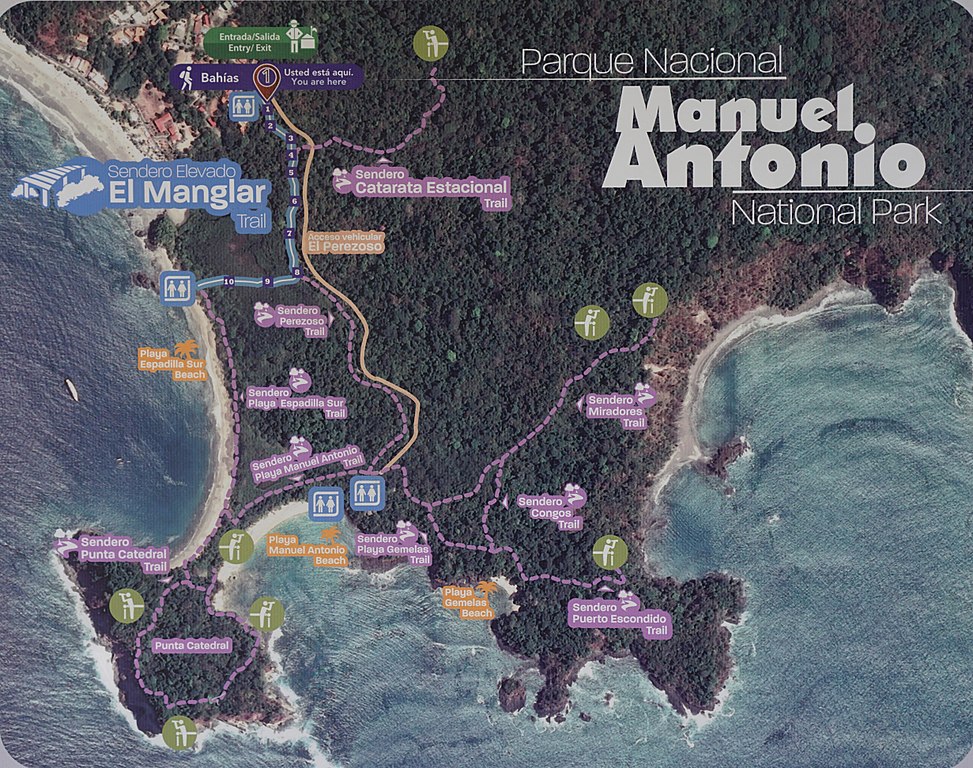
Do I need hiking boots for Manuel Antonio?
You don’t need hiking shoes to visit Manuel Antonio National Park, but good shoes you can walk in are advisable. While it is possible to walk around in open shoes like sandals and flip flops, it’s advisable to wear closed shoes if you want to cover a good distance. We’ve listed some recommendations on what to pack in the section below.
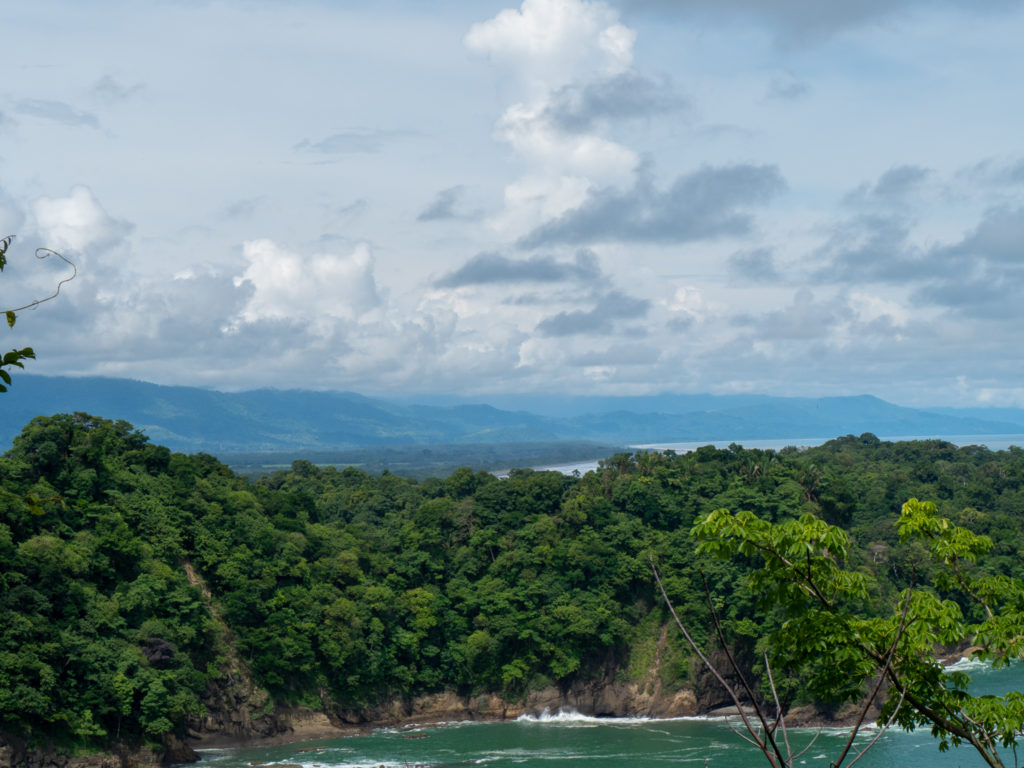
Beaches in Manuel Antonio National Park
There are four beaches located within the boundary of Manuel Antonio National Park and a further four close by. Here are the beaches you can find inside the park:
1) Manuel Antonio Beach
Located near the café, this stretch of white sand is the most popular beach inside the park. It is a great place to relax or swim in the secluded bay. Wildlife can often be spotted in the vegetation that lines the beach. Facilities including showers, toilets and a kiosk are right outside the entrance to the beach by the Junction.
2) Espadilla Sur Beach
Espadilla Beach stretches more than a mile along the coast. It is split into two sections – the northern end is located in the town of Manuel Antonio, while the southern end is within the national park. This beach is located on the opposite side of the tombolo (a natural land bridge) to Manuel Antonio Beach. The currents here can often be strong.
3) Gemelas Beach
This small beach is further into the park but much quieter than the other beaches mentioned so far. It’s also a popular place to see the elusive squirrel monkey. Crabs and iguanas can also be seen on the volcanic rock that lines the edges of the beach.
4) Escondido Beach
This beach sits on the eastern side of the conservation park and is the furthest from the entrance. It is surrounded by jungle and a popular swimming spot for visitors.
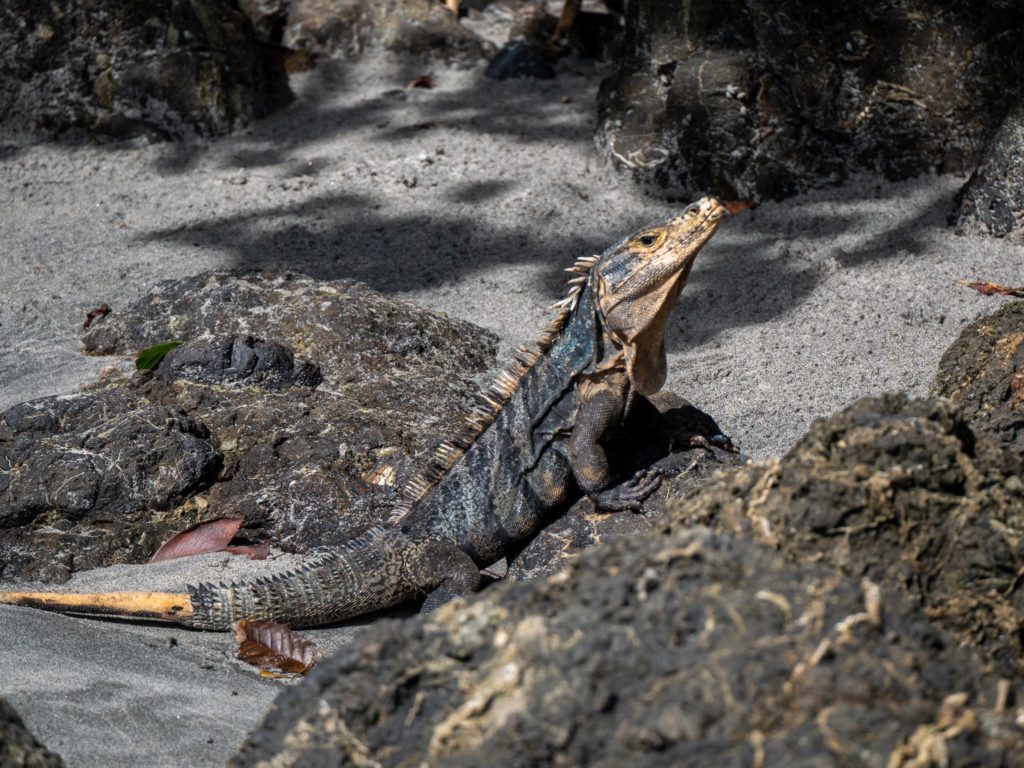
Things you need to know before visiting Manuel Antonio National Park
There are some really important things to know before you go to Manuel Antonio. There are restrictions on items you can enter with, as well as food and drink you can and can’t take with you. There are also a lot of dodgy practices popping up that we’d like to warn you of before you visit.
Scams at Manuel Antonio
The first thing to be aware of when visiting Manuel Antonio National Park is that it’s a very popular destination, and unfortunately, this means it’s a hot target for scammers. There are a few common Costa Rica tourist scams to look out for on your visit, but the main two are tickets and parking. It’s really important to know you’re purchasing legit tickets for the park, so it’s important to research ahead of time. There’s also no official parking so you need to know what to expect when you arrive so you don’t face extortionate fees from independent touts.
Read next: Is Manuel Antonio a Tourist Trap or Ethical National Park?
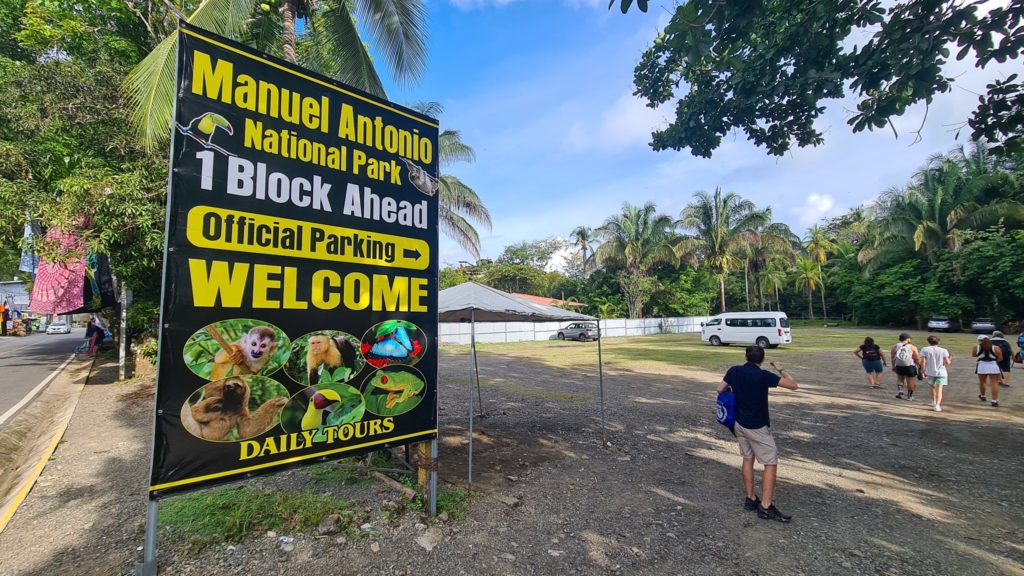
Can you take food into Manuel Antonio National Park?
Normally, no food is allowed into the park. However, because the café is currently closed, you are temporarily allowed to bring food like sandwiches and fruit into the park, but only if it is pre-made and not in plastic packaging. If and when the café reopens, you will presumably no longer be allowed to bring food in.
Water and drinks are fine to bring with you, but single-use plastic is banned in national parks in Costa Rica, so you won’t be able to take a plastic water bottle. There are water refill stations all around the park so it’s a good idea to bring your reusable water bottle.
Read next: The 15 Best Travel Water Bottles In 2024 From Companies That Give Back
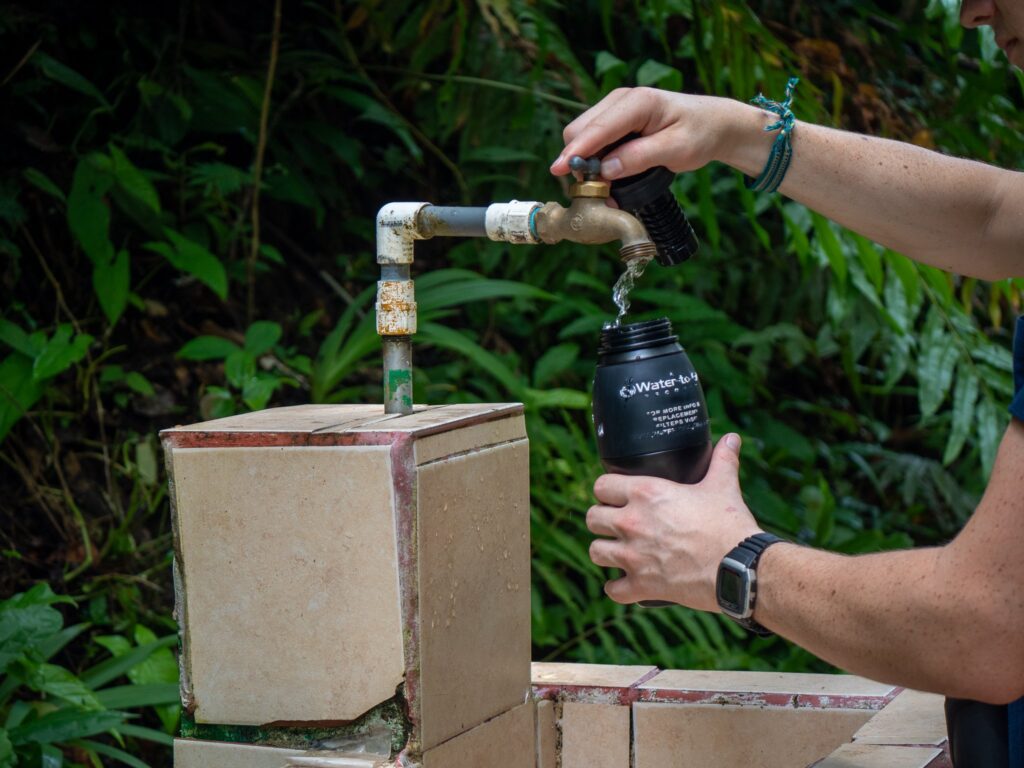
Can you buy food inside Manuel Antonio National Park?
There is a café inside the park near the main beach. It was closed in 2023 but has been reopened in 2024. You can buy a range of food and drinks from the kiosk in the café.
The temporary closure of the café was, in our opinion, a good thing. When we visited Manuel Antonio National Park, the most questionable human impact on the local wildlife happened at the café. The monkeys particularly were getting too comfortable trying to steal food from people, which can lead to aggressive behaviour and injuries. This is something we noticed on our visit. Hopefully, this closure will give the animals a bit of a break from human food.
It’s obviously unreasonable to expect people to go the whole day without food, so there’s a kiosk in the beach area where food can be purchased.
Read next: Let’s Talk About The Plastic Problem
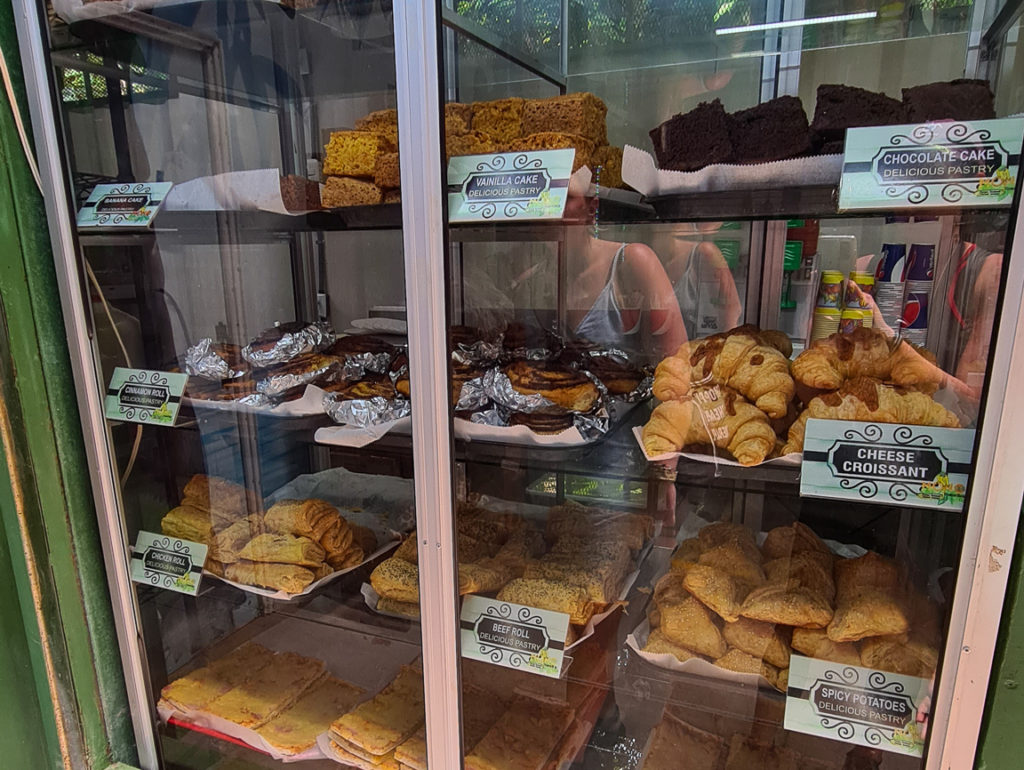
Other things to know before visiting Manuel Antonio National Park
- No pets are allowed in the park, however service dogs are allowed with a permit which can be obtained at the guard station.
- No drones are allowed in the national park.
- No single-use plastics are allowed inside, including bags and water bottles.
- There are bathrooms, showers and picnic tables by Manuel Antonio Beach.
- Other restricted items include surfboards, beach umbrellas, coolers and footballs.
- Bags are checked for forbidden items by security at the main entrance.
- Don’t leave bags unattended. Not only is this an invitation for petty theft, but it’s also an invitation for wildlife to come rifling through your things in search of food.
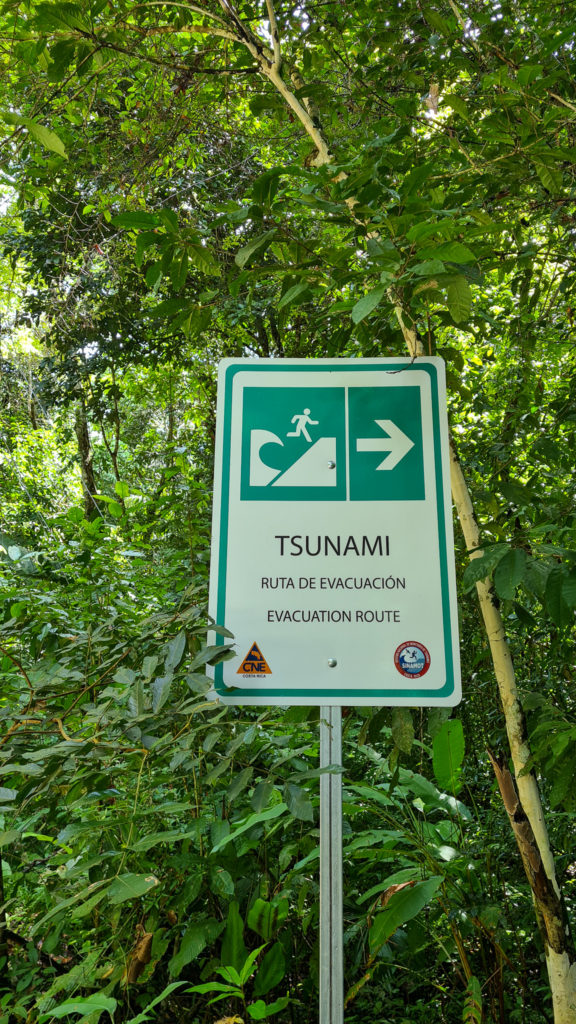
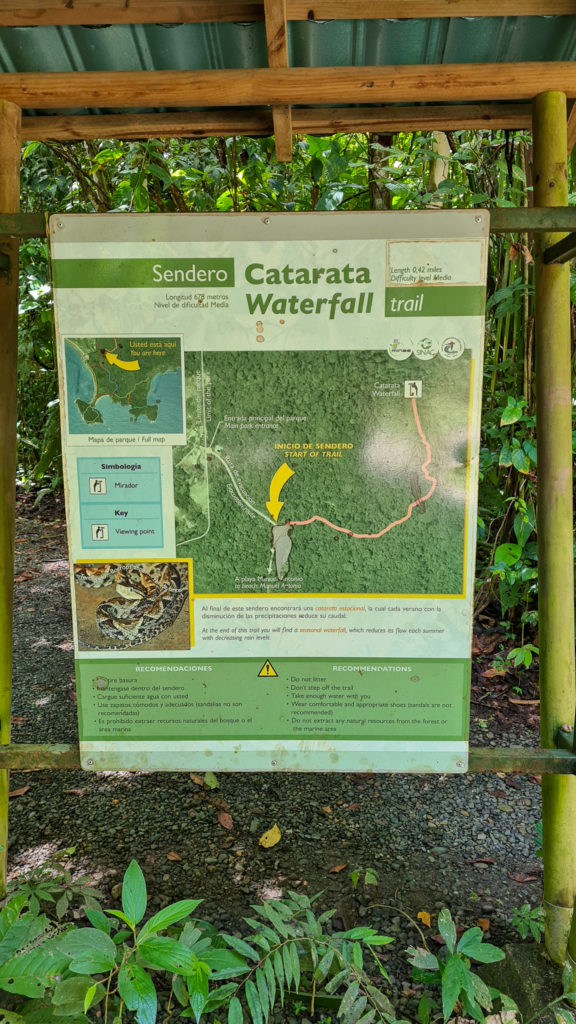
Manuel Antonio Opening Days & Times
Manuel Antonio National Park is open from 7:00-16:00 every day except for Tuesdays.
The trails inside the park are also open between 7:00-16:00, but the beaches close at 15:00 to allow everyone time to leave.
Espadilla Norte, the beach located outside Manuel Antonio National Park is open between 5:00 to 18:00 every day.
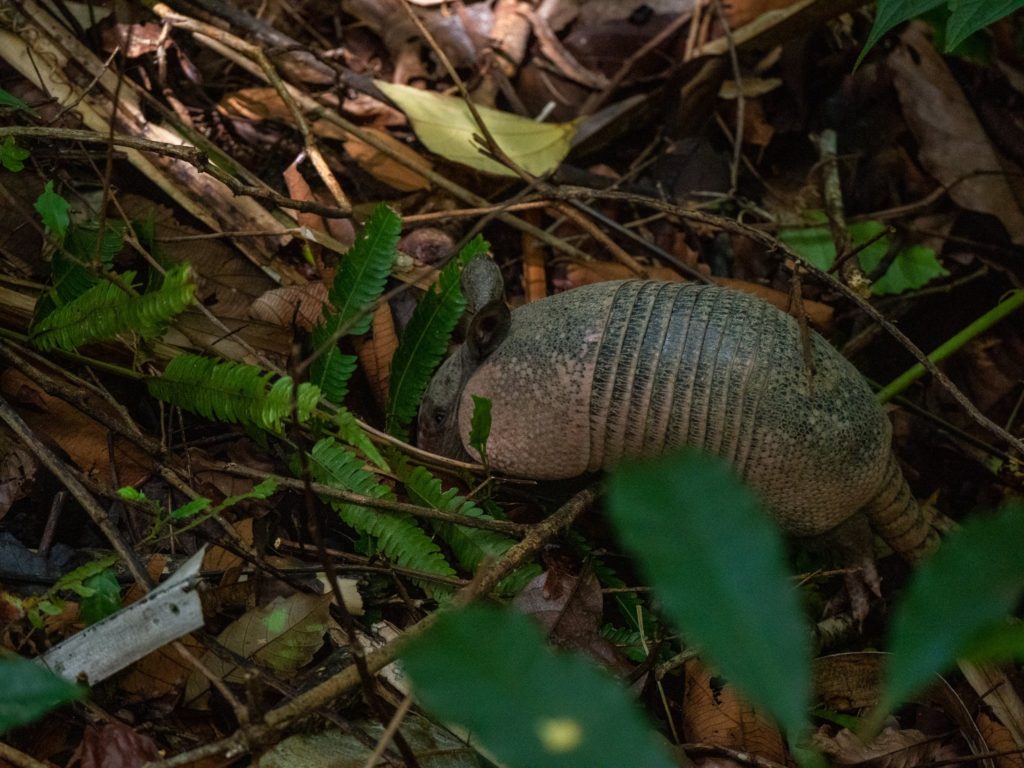
When is Manuel Antonio National Park closed?
It’s important to know before visiting Manuel Antonio National Park that it is not open on Tuesdays. This is an important rest day to let the animals have a break from human activity and to allow staff to do important conservation work within the park.
Manuel Antonio National Park is not closed on holidays. It actually remains open for every important holiday, including Christmas Day (unless it falls on a Tuesday).
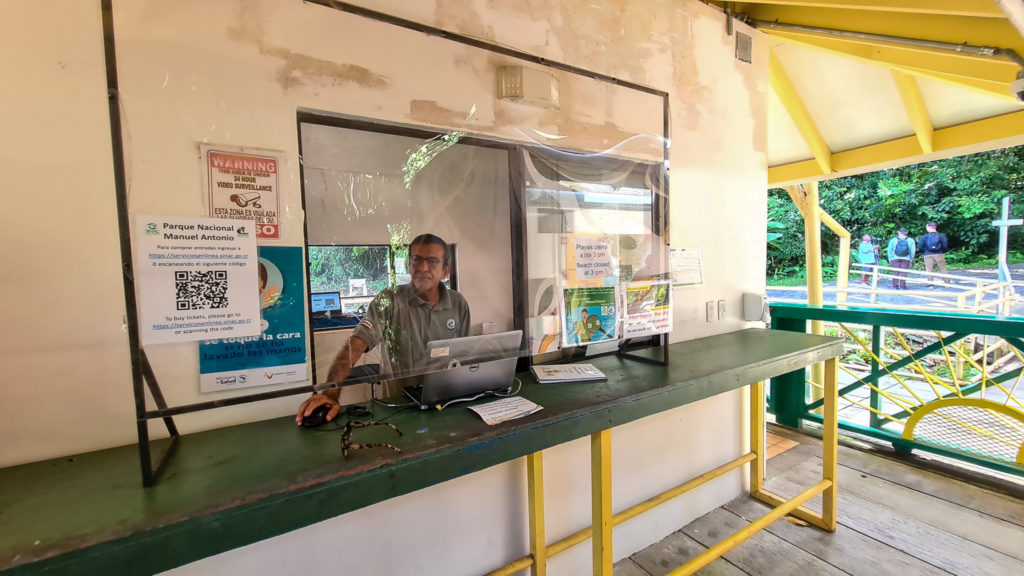
How much does it cost to visit Manuel Antonio National Park?
On the official website, Manuel Antonio tickets are priced in USD but when you checkout and pay, you will be charged the equivalent in Costa Rican Colones. It’s a good idea to have a multi-currency account like Caxton or Revolut so you don’t get hit with currency exchange banking fees.
Manuel Antonio National Park Ticket Prices 2024
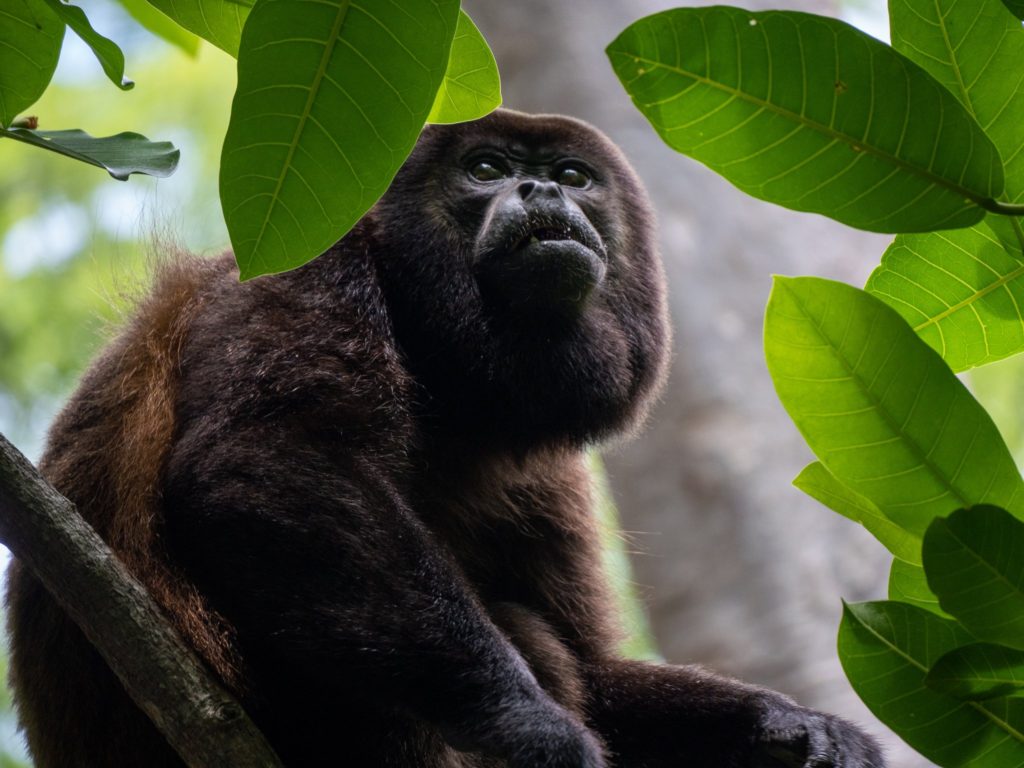
How to book a ticket for Manuel Antonio National Park
There are two types of ticket for Manuel Antonio National Park: guided tours (which include your entrance fee) and self-guided visits. Tickets for self-guided tours can only be purchased from the official Manuel Antonio National Park website. This can make it a bit tricky to secure tickets as it gives you less flexibility. You cannot purchase tickets in person at the Manuel Antonio National Park entrance.
To book a ticket for Manuel Antonio National Park online, you need to create an account with the National System of Conservation Areas (SINAC). This allows you to add your personal information and payment details, as well as choosing a time and date to visit. You will need to register your passport number when purchasing your ticket.
You will also need to show physical identification (like a passport or driver’s licence) when you present your entrance reservation.
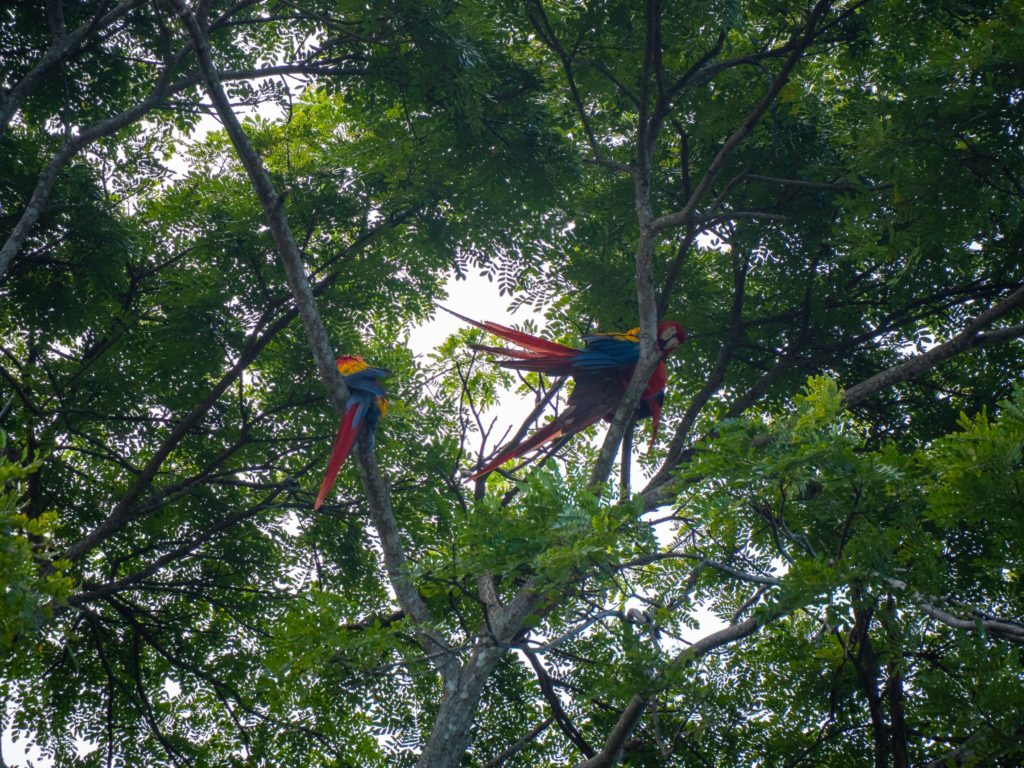
Do you need to pre-book for Manuel Antonio National Park?
Often in Costa Rica, and much of Central America, it is not necessary to book tickets for attractions in advance. Manuel Antonio National Park is an exception. It’s necessary to pre-book a ticket before visiting and you won’t be able to go without doing so.
Every day is split into time slots and you won’t be able to get into the park without a reservation. You can choose your time slot when you book your ticket.
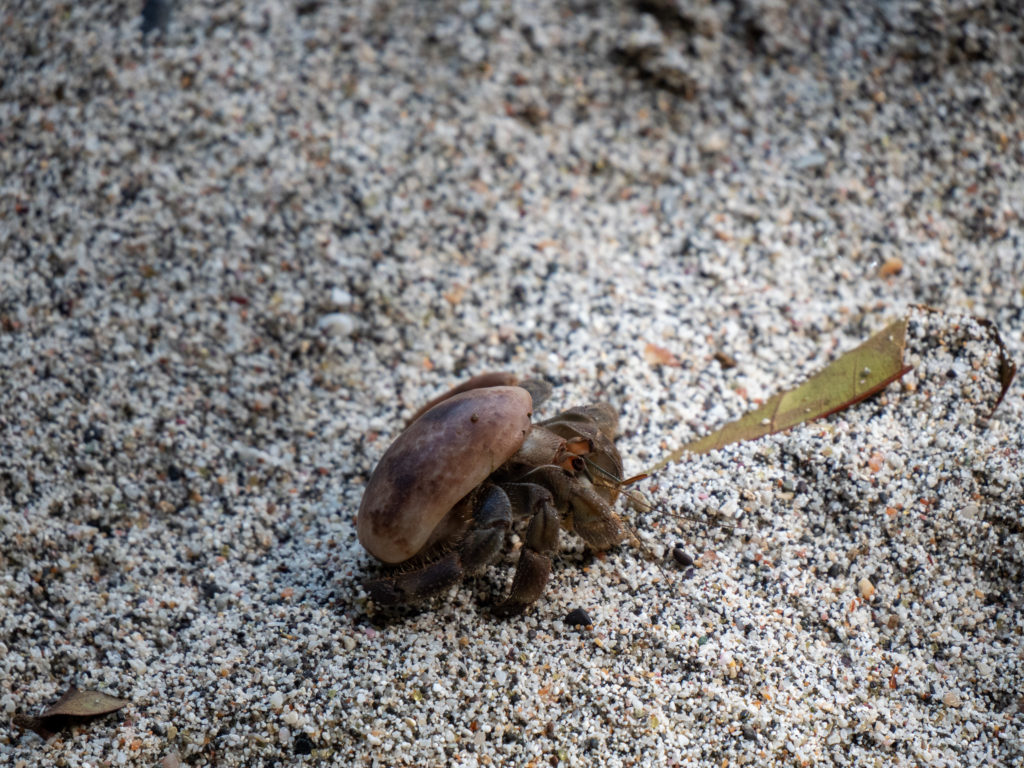
Manuel Antonio National Park Entrance Times
The first time slot is 7:00–7:40, and the final time slot is from 13:00–14:30 (the only slot that is longer than 40 minutes). After buying a self-guided tour ticket for Manuel Antonio National Park, the times you can enter are broken down into the following time slots:
07:00–07:40
08:00–08:40
09:00–09:40
10:00–10:40
11:00–11:40
12:00–12:40
13:00-14:30
If you don’t enter within your designated time slot, there’s no guarantee you’ll be able to get in at a later time, so try to arrive early.
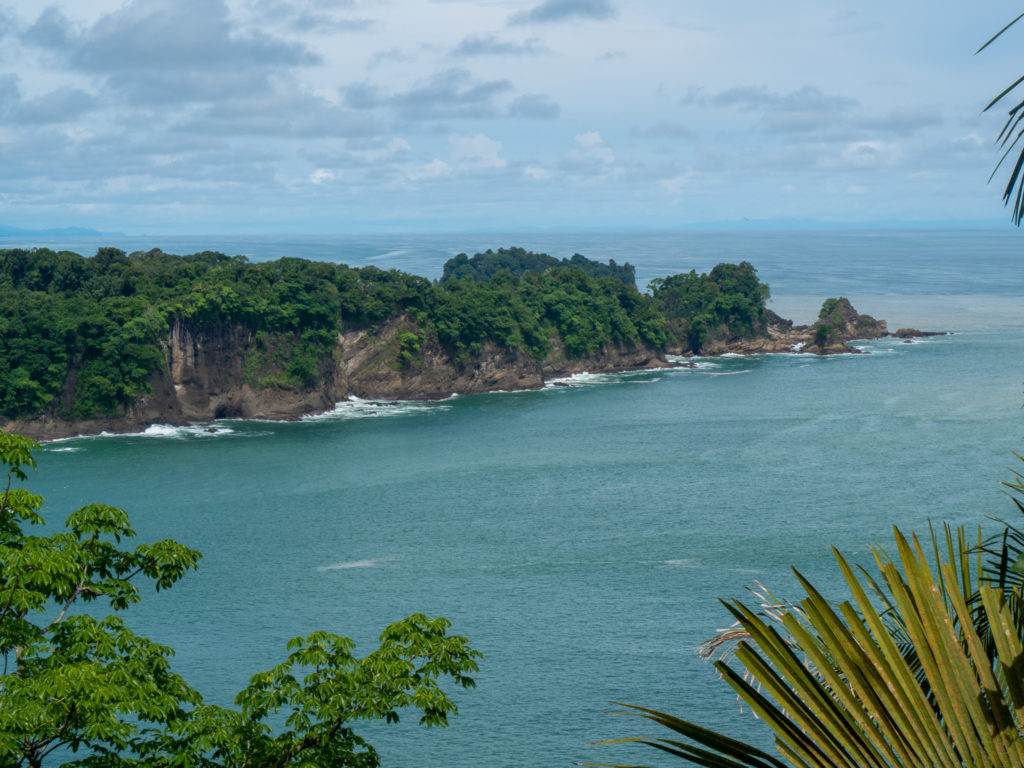
Do you need to book your ticket to Manuel Antonio National Park in advance?
The time slots fill up quickly and there are a limited number of tickets available for each day. In fact, Costa Rica’s court just rejected a movement to up the capacity limit of the park. Previously the number of visitors allowed into the park was 3000 people a day. As of 2023, the limit has been reduced to just 1120 people per day. This is greatly important for retaining the wilderness within the park, and for protecting the animals and plant life within from the unethical impacts of overtourism.
It’s highly advisable to book in advance to ensure you can visit on your preferred day and time. Generally, booking a week in advance is fine, but in peak season (December to April) tickets go quickly so it may be necessary to book two weeks in advance.
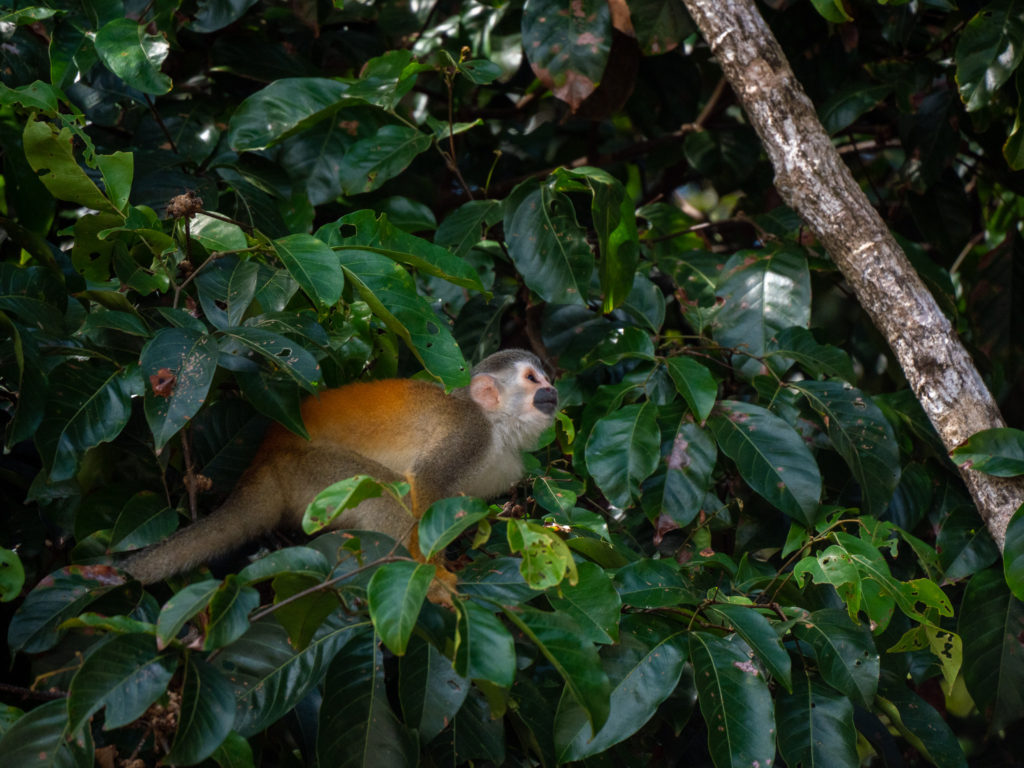
How much time is needed at Manuel Antonio National Park?
How much time to spend in Manuel Antonio National Park depends on how much you plan to do there. Typically, visitors spend a day in the park. To explore all the trails and beaches, we’d recommend arriving when the park opens at 7:00 and staying all day. If you’re only interested in the main sights, 6 hours is plenty of time. You’d only need 4 hours to do the main trail to Manuel Antonio Beach with time to relax on the sand. And a simple guided tour is between 2-3 hours.
Unfortunately, there are no multi-day passes so if you plan to spend longer in the park, you’ll need to pay for entry each day that you visit.
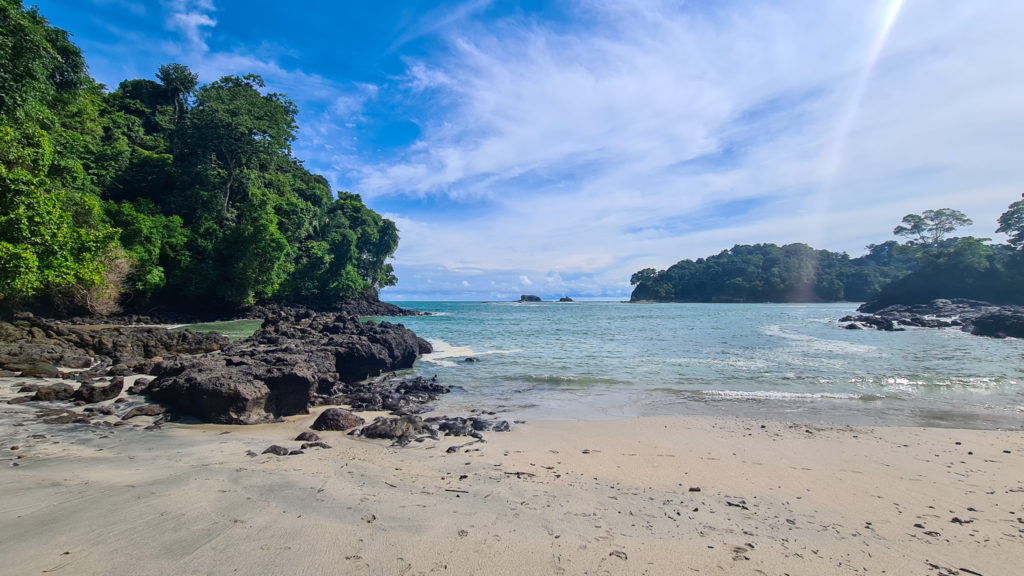
How long does it take to see Manuel Antonio National Park?
Many visitors to Manuel Antonio National Park spend a full day inside the park and consecutive days at the public beach. This means you don’t need to pay for entry on multiple days. We like to do things thoroughly (it’s in our name!) so we’d recommend at least one full day.
It is possible to do Manuel Antonio National Park as a day trip from other areas in Costa Rica, like San José, which is a good option if you have limited time. Although this can mean a round trip of up to 6 hours. If you can stay nearby, we’d recommend it.
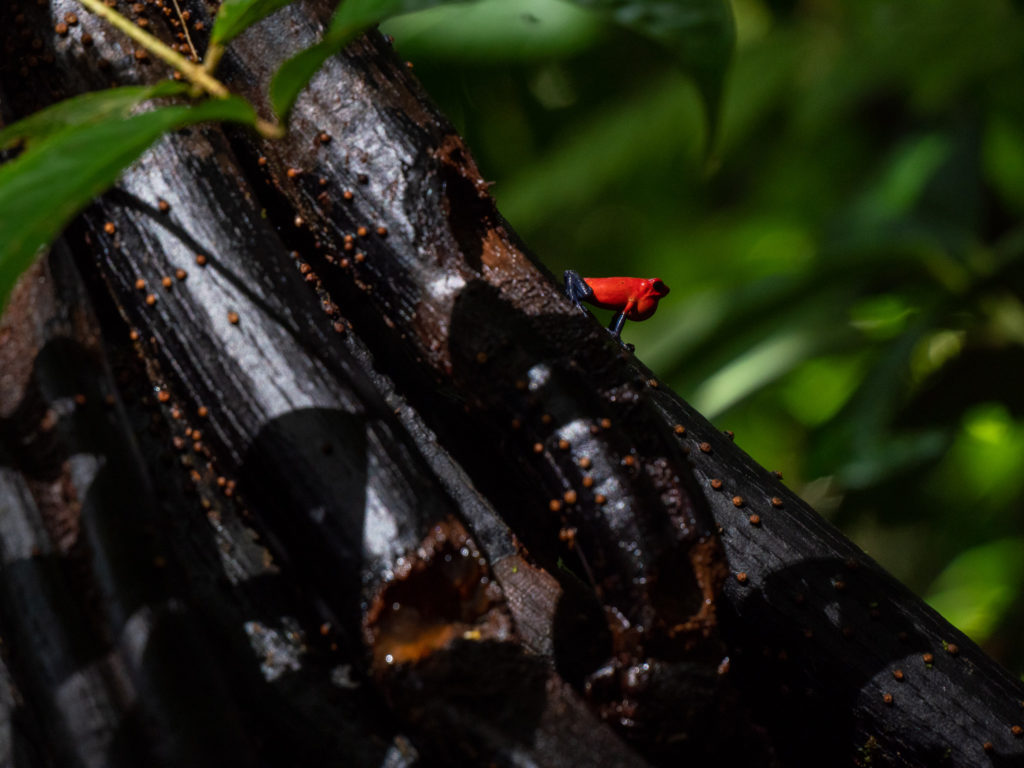
When is the best time to visit Manuel Antonio?
We think the morning is the best time to visit Manuel Antonio National Park. The first time slot of the day is the quietest time to visit and allows you to be further into the park by the time the entrance starts getting busier. The mornings are also cooler so it’s a good idea to start as early as possible if you want to do a lot of hiking. The afternoons are typically busier, particularly at the beaches.
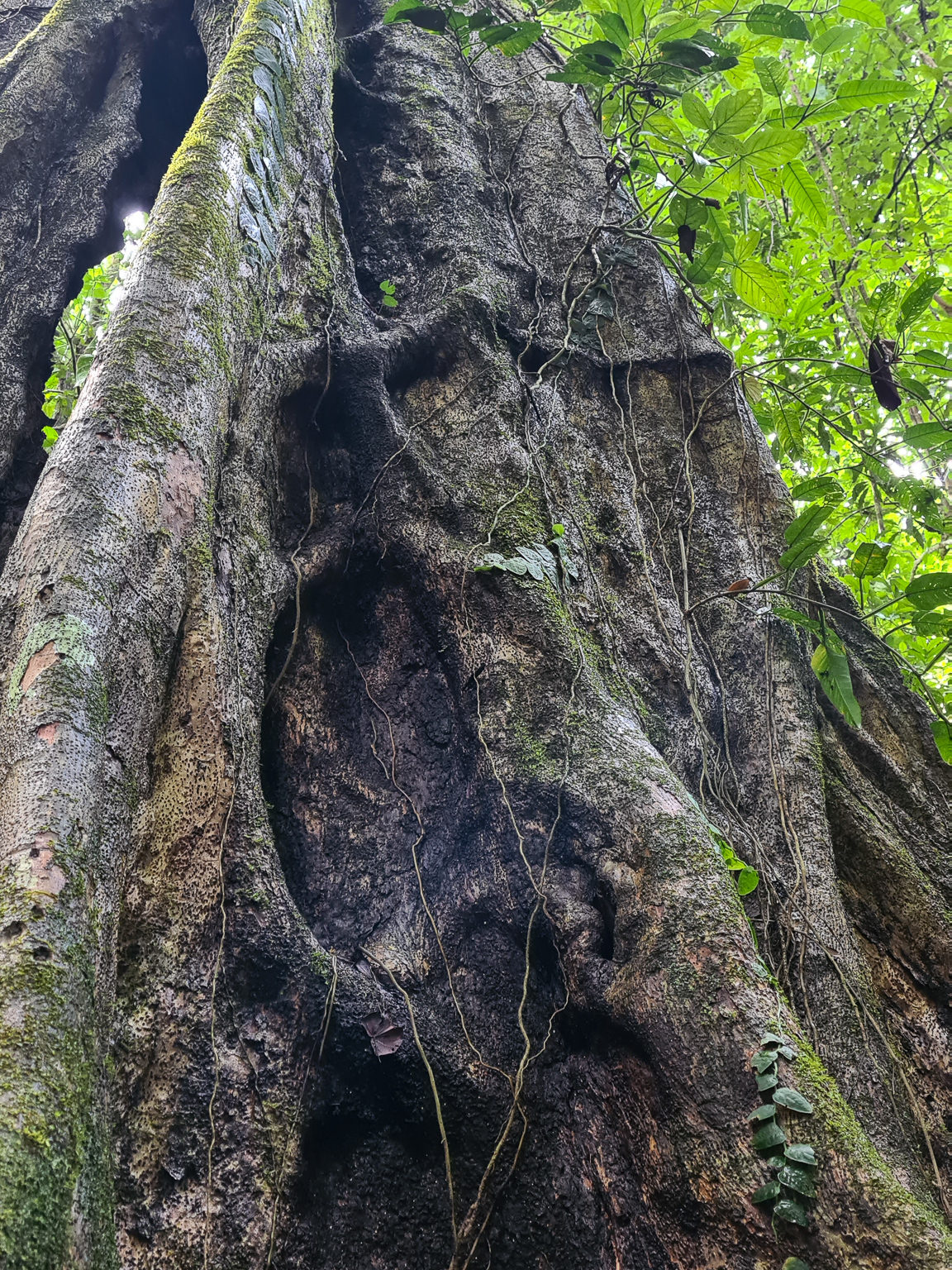
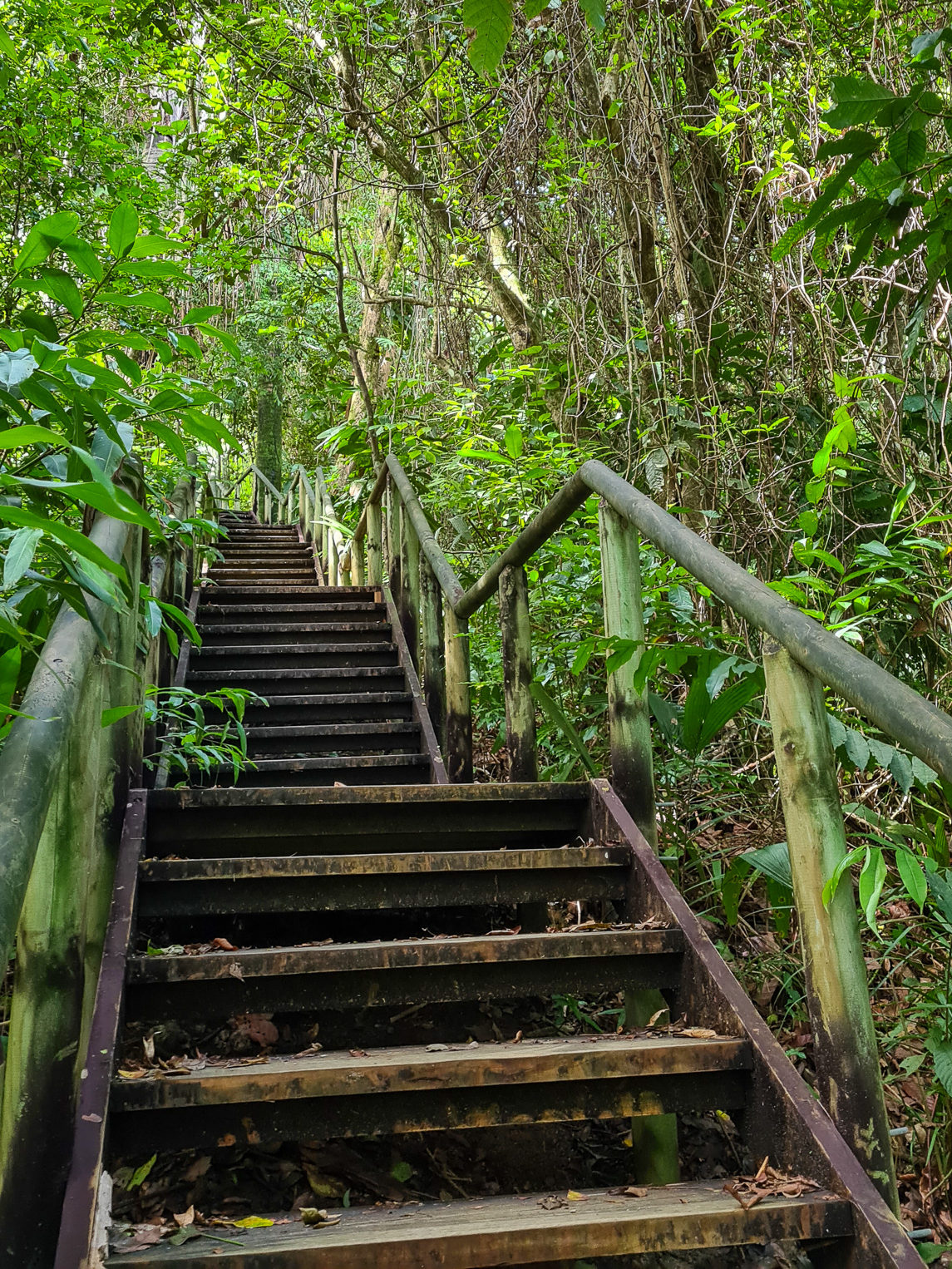
What are the best months to visit Manuel Antonio?
The best weather in Costa Rica is typically between December to April. This is also the most popular time to visit. May to November is a quieter time to visit Manuel Antonio National Park. This is also when the rainy season happens. Although generally it only showers in the afternoons rather than raining all day every day. We visited in June and had perfect weather all day until we left at 16:00. September to November are the rainiest months so avoid these if it’s important to you to stay dry.
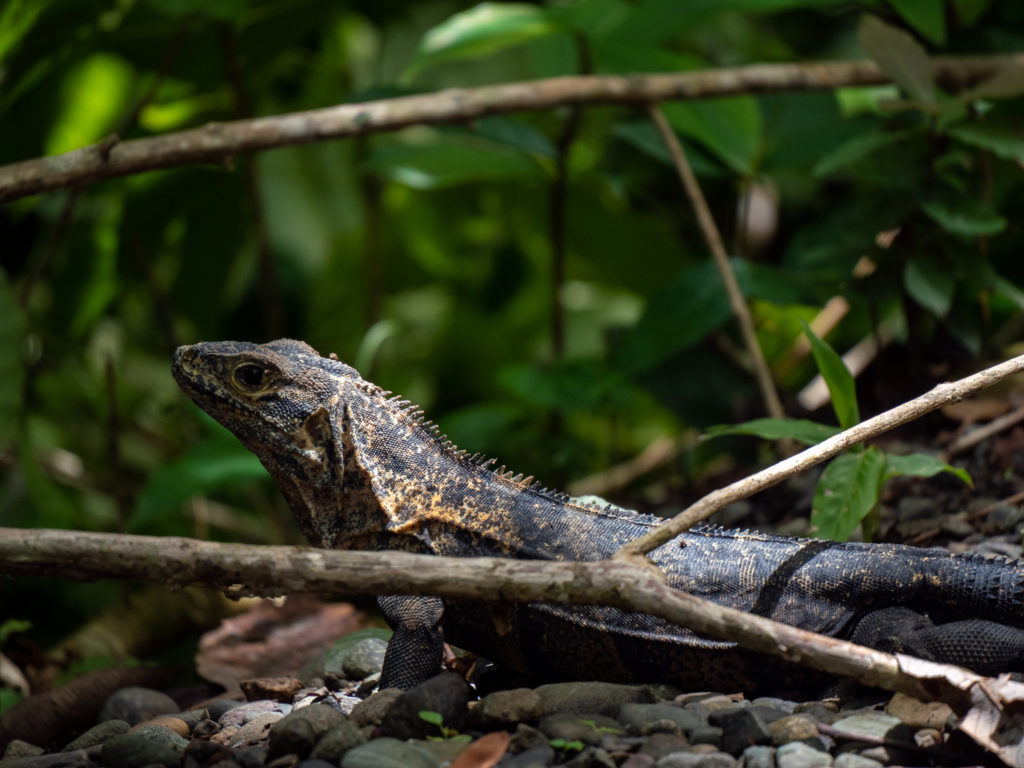
Where to stay to visit Manuel Antonio National Park
There are several towns to choose from when planning your accommodation. Manuel Antonio is right next door to the national park, while Quepos is only 15 minutes’ drive away. Other popular towns along the Pacific Coast, like Uvita, Dominical and Jaco are also within a few hours’ drive.
What city is near Manuel Antonio National Park?
The closest town to Manuel Antonio National Park is a town of the same name, which sits right outside the main entrance. Featuring beaches, waterfalls, bars and restaurants, Manuel Antonio is a small town but a great place to stay the night before visiting the national park – you can’t get any closer than right outside the entrance.
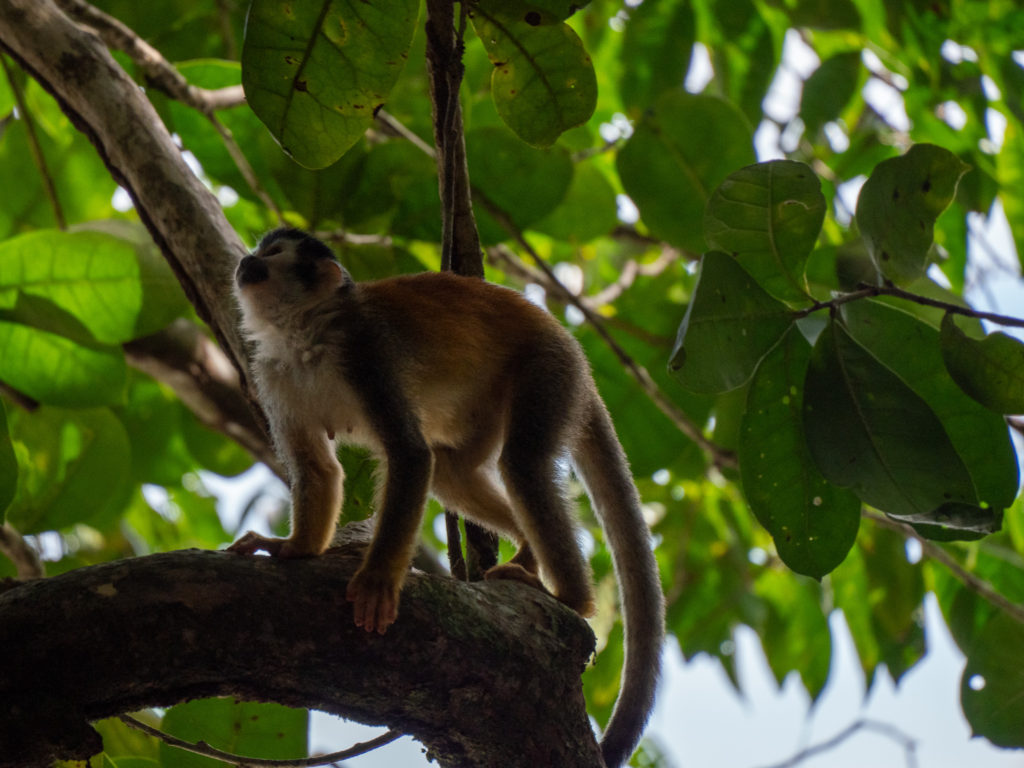
Where to stay in Manuel Antonio
Manuel Antonio is a small town and completely walkable. Options of accommodation range from budget hostels to boutique hotels. Choose from beachfront rooms to a hotel surrounded by lush jungle – and keep an eye out for monkeys in the trees.
*All prices below are an indication of average nightly cost in USD*
Location location location: La Posada Jungle Hotel
Literally located right by the main entrance to the national park, La Posada Jungle Hotel is about as close as you can get. A small hotel with only 12 rooms, you’re guaranteed privacy and a spot at the pool.
- $100+ per night
Budget: Millenium Hotel – Manuel Antonio
Within walking distance to all Manuel Antonio’s major attractions, this hotel is sleek, offers free Wi-Fi, private parking and an outdoor pool
- $100+ per night
Mid-range: Hotel Playa Espadilla & Gardens
Located right near Espadilla Beach, this nature inspired hotel features an outdoor pool and immediate access to hikes, activities and the national park.
- $175+ per night
Luxury: La Vela Boutique Hotel
An upscale boutique hotel, La Vela is the perfect secluded getaway. The buffet breakfast is served by the outdoor pool, while the gorgeous rooms have safes large enough for your camera gear and laptops.
- $200+ per night
Hostels near Manuel Antonio
If you’re looking to visit Manuel Antonio National Park on a budget, it might be a smart idea to stay in a nearby hostel and use the bus to get into the town. Here are the best hostel options nearby:
*All prices below are an indication of average nightly cost in USD*
For eco-conscious travellers: Teva Jungle Hotel and Hostel
- $10+ per night
For creatives: Planet B Hostel
- $12+ per night
For free breakfast: Hostel Plinio
- $15+ per night
For sociable backpackers: Selina Manuel Antonio
- $25+ per night
Book your transport from San José to Selina Manuel Antonio here!
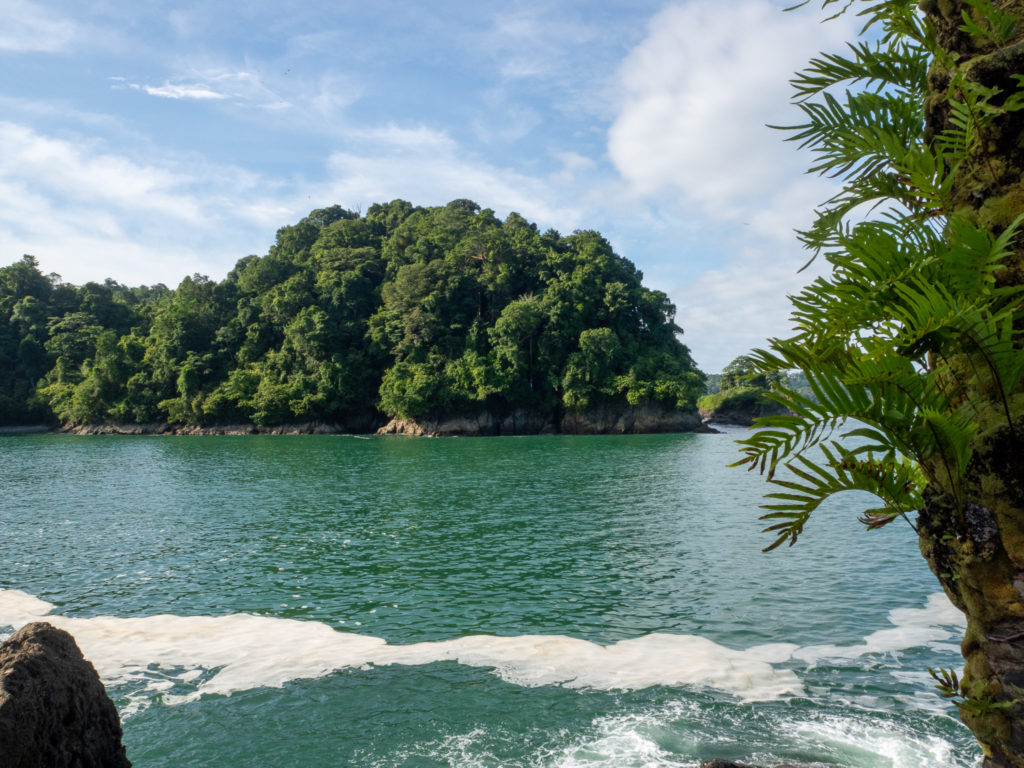
How many days should I stay in Manuel Antonio?
You only need one day in the national park, but it’s a good idea to spend a couple of days in Manuel Antonio town to see the main sights. Three days would give you plenty of time to explore the hikes, beaches and activities in the area.
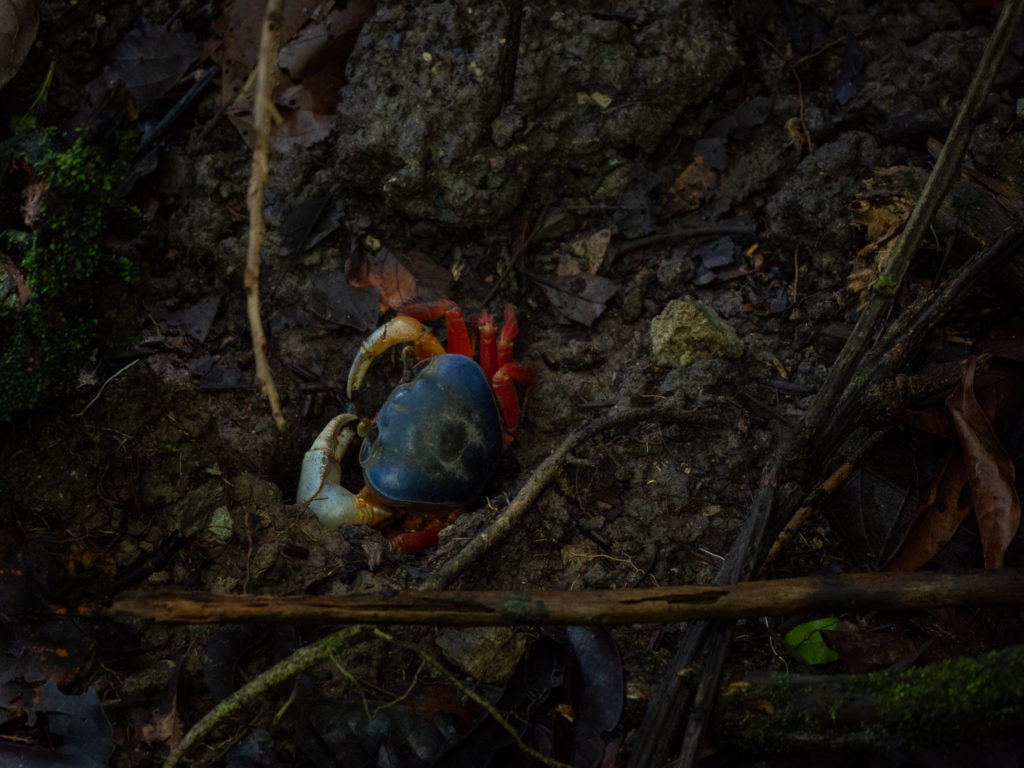
The best beaches in Manuel Antonio
As well as the 4 beaches inside the national park, there are 4 stunning beaches in Manuel Antonio town:
1) Espadilla Norte Beach
The northern half of Espadilla Beach (the southern half is located within the national park), this beach is free to visit and lined with beach bars and restaurants.
2) Playitas Beach
This small beach lies further north and has a more relaxed vibe, being popular with the LGBTQIA+ community. Be aware that it is closed at high tide.
3) Biesanz Beach
A tree-shaded beach with a shallow bay, Biesanz Beach perfect for sunbathing and swimming in the ocean.
4) La Macha Beach
Further north, this secluded beach sits at the edge of the city and is perfect for hiking through the jungle (in proper shoes) and spotting wildlife.
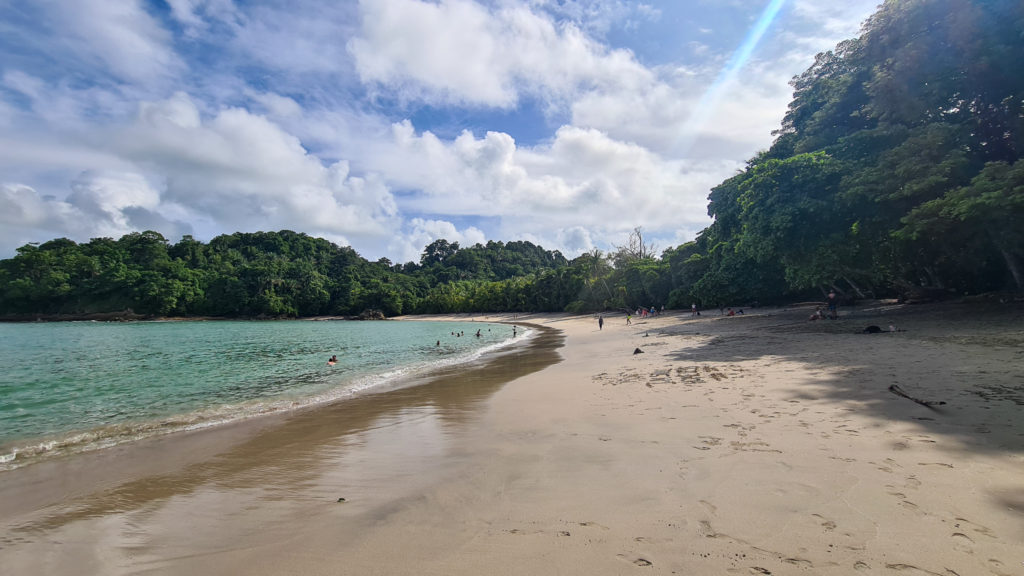
The best things to do in Manuel Antonio
There is so much to see and do around Manuel Antonio town. Here are our top picks:
- Daytrip to Nauyaca Waterfall
- Take a Mangrove Boat Tour
- Kayak the Mangroves
- Go ATV Off-Roading
- Walk the suspension bridges at Rainmaker Mountain
- Take a Night-time Wildlife Tour of Rainmaker Park
- Volunteer at a Wildlife Sanctuary
- Go Sailing and Snorkelling
- Relax on a Catamaran
- Zip Line through the Treetops
- Visit a Chocolate Plantation
- Go Whitewater Rafting
- Learn to Surf
- Kayak on the Ocean
- Go Stand Up Paddleboarding
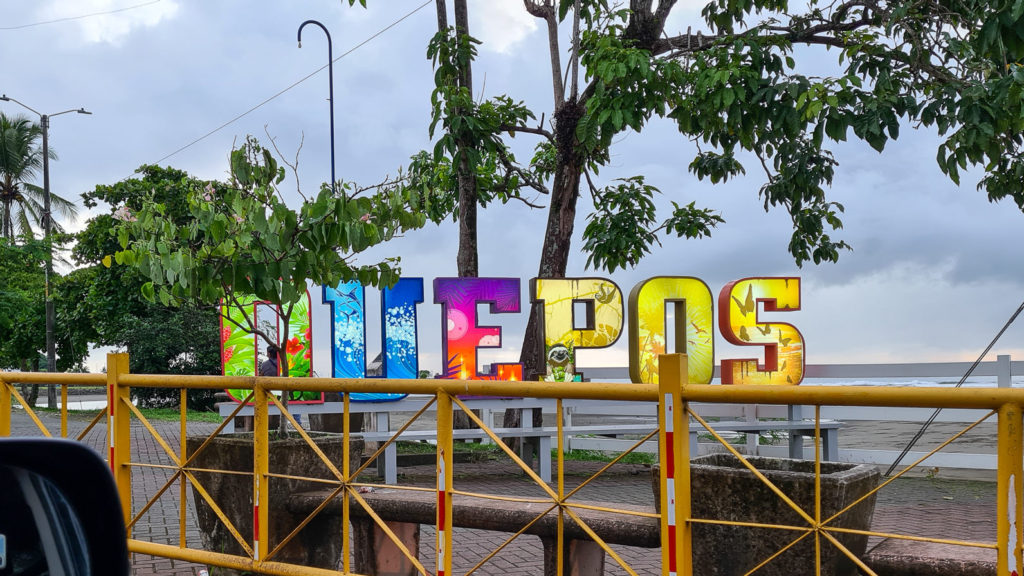
Camping near Manuel Antonio National Park
No camping is allowed inside the park and it’s not recommended to camp right outside either.
Using the iOverlander app is a great way to find spots for camping in Costa Rica. Wild camping is legal in Costa Rica so it’s possible to find a public place to pull up in and stay overnight. If you need more facilities you can book an official campsite, or take advantage of some of the many free campsites.
The night before we visited Manuel Antonio National Park, we camped at Parque Nahomi on the edge of Quepos. This free campsite has toilets, showers, BBQs, water and security (although they are closed at night) and gave us some insane views to wake up to in the morning. Then, we were only a 15 minute drive from the entrance.
Read next: Road-tripping Costa Rica in a 4×4 Camper Car with Nomad America
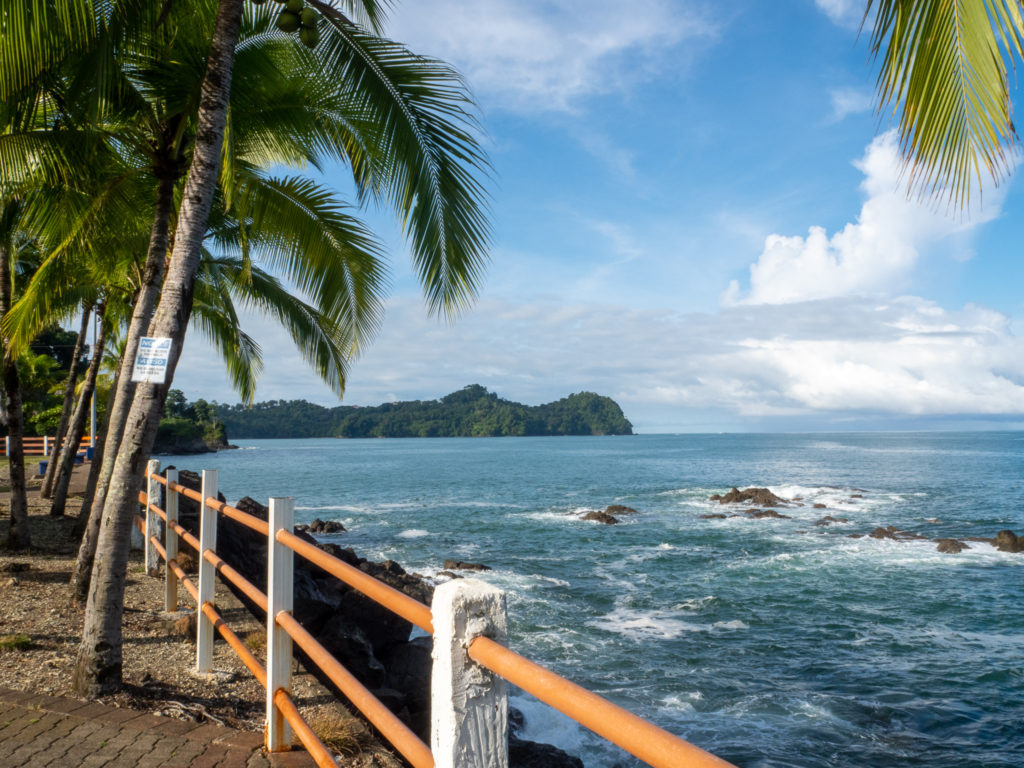
What to expect in Manuel Antonio National Park
To give you an impression of a visit to Manuel Antonio National Park, we’ve put together this quick Q&A section:
Does Manuel Antonio National Park have waterfalls?
Yes, the short hike along the Waterfall Trail leads to a small waterfall. There are also several popular waterfalls within a day trip from Manuel Antonio, including Nauyaca and Eco Chontales.
Can you swim in Manuel Antonio National Park?
Yes, the beaches are safe for swimming. Playa Manuel Antonio is the most popular beach to swim at, while Playa Gemelas is best for snorkelling. Marine wildlife you might see in the waters here include white tip reef sharks, sea turtles, spotted eagle rays, seahorses and reef fish.
Are there mosquitos in Manuel Antonio?
Yes, although we didn’t have any problems with mosquitos on our visit, it is still possible to be bitten by them in the park. If you’re prone to being bitten, we’d recommend wearing long sleeves and eco-friendly (non-DEET) bug spray.
What should I pack for Manuel Antonio National Park?
How to dress for Manuel Antonio
We’d recommend you wear:
- Good walking shoes or hiking boots
- Layers you can take off as you get hot from walking
- A cap
- Sunglasses
We’d recommend you pack:
- A pair of sandals or flip flops for the beaches
- Swim wear
- A light raincoat if you’re visiting in rainy season
Is Parque Nacional Manuel Antonio worth it?
We definitely think a visit to Manuel Antonio National Park is a day out to be remembered. From the pure abundance of wildlife to the sprawling beaches, luscious forests and beautiful hikes, there’s something to see every few steps. Now you know everything there is to know about visiting Costa Rica’s smallest and most popular national park, it’s time to book those tickets and get out into the raw nature this part of the world is renowned for.
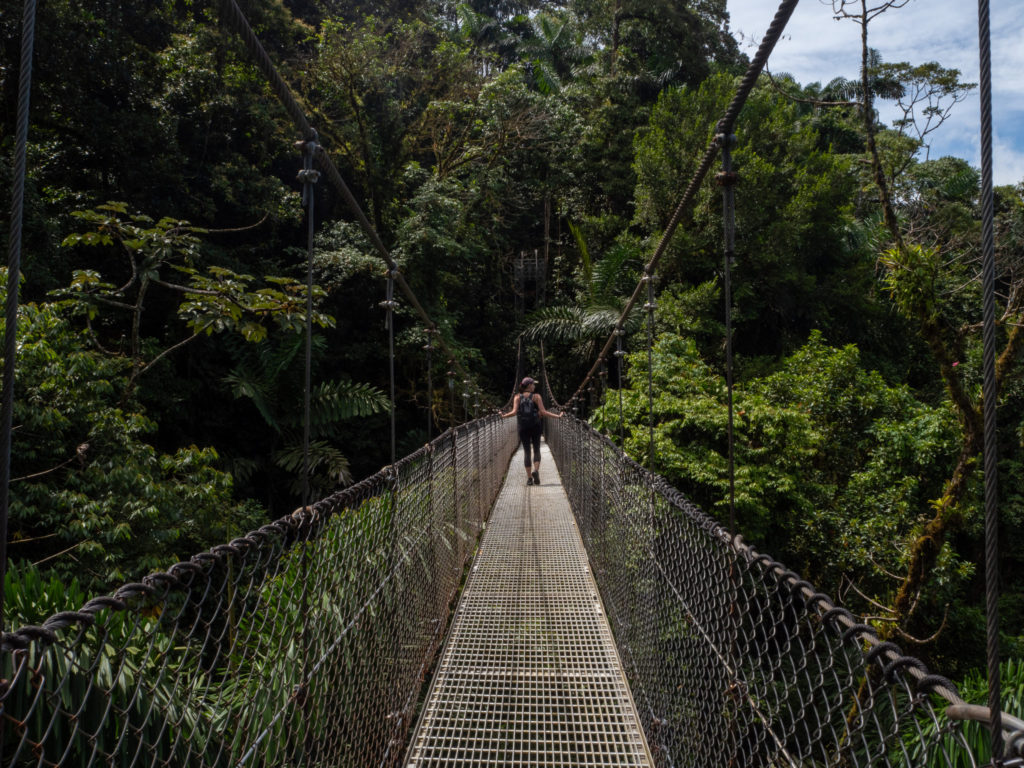
Read next:
Where to see Sloths in La Fortuna
Where to see Quetzals in Costa Rica
The Best Things To Do In Monteverde
Should you hold a sloth in Costa Rica?
Road-tripping Costa Rica in a 4×4 Camper Car with Nomad America
Let’s Talk About Ethical Wildlife Tourism
